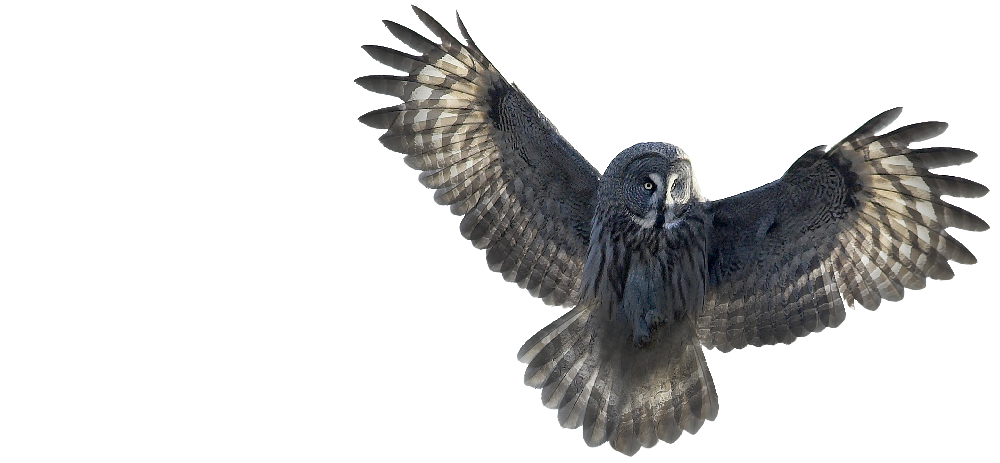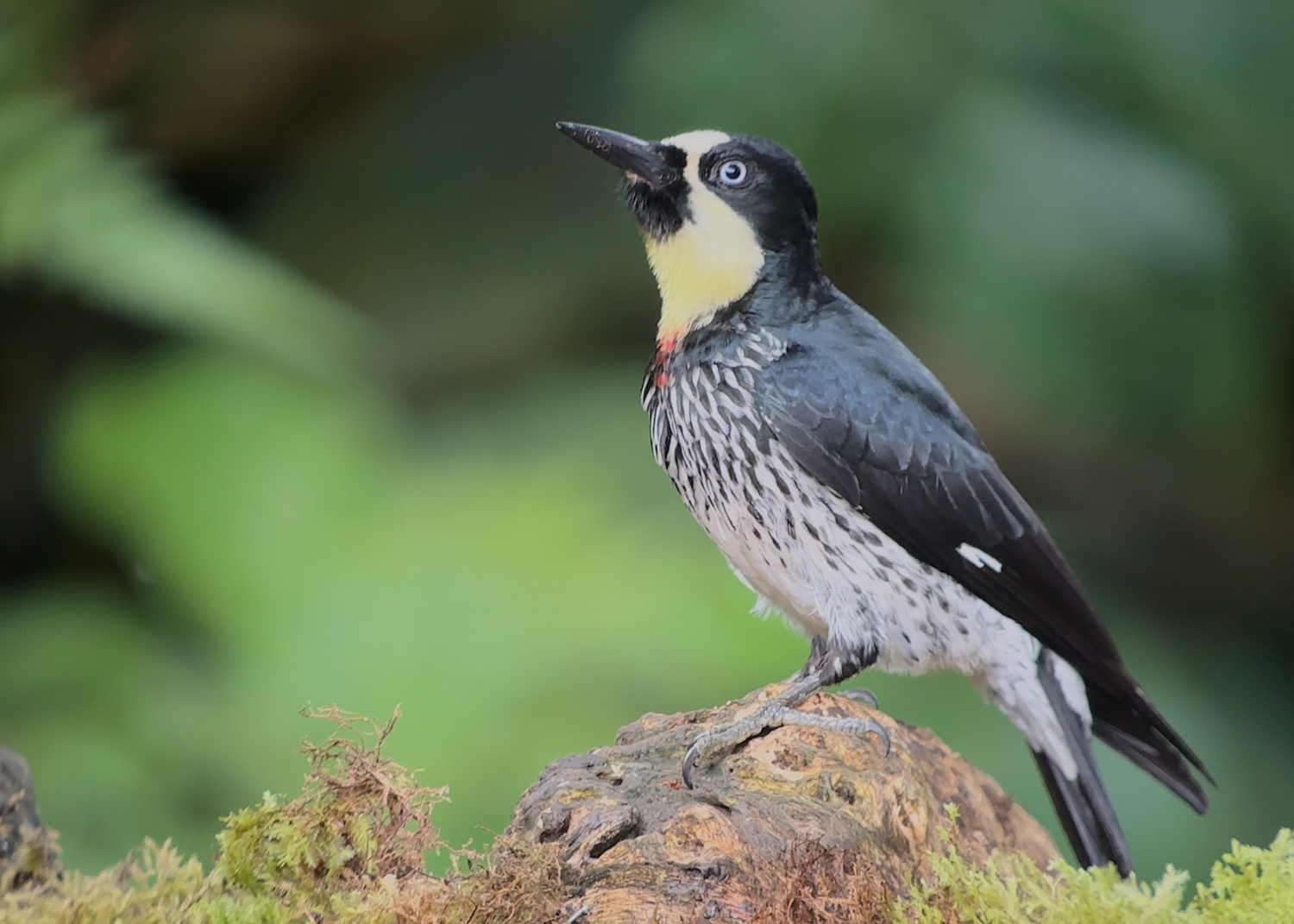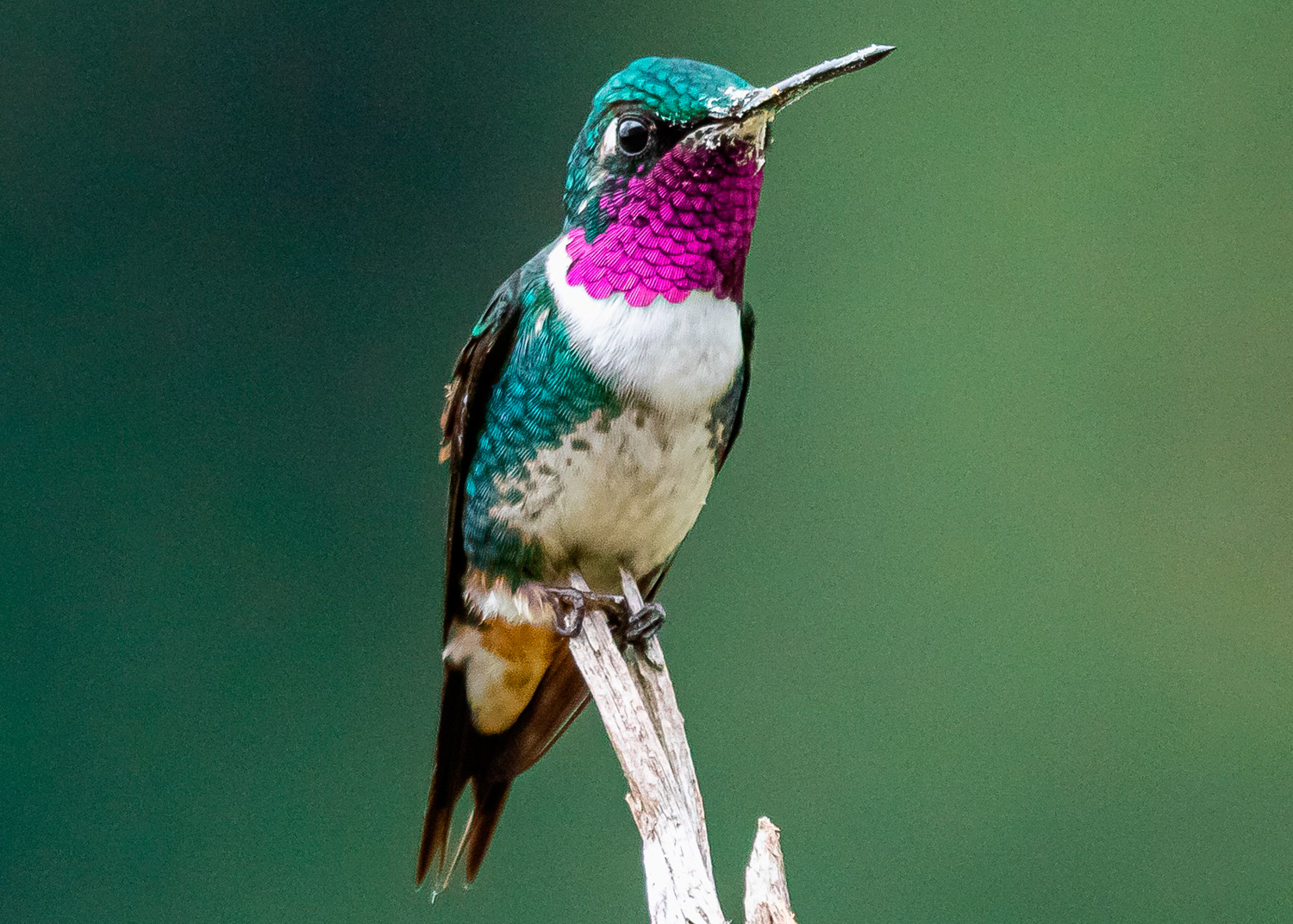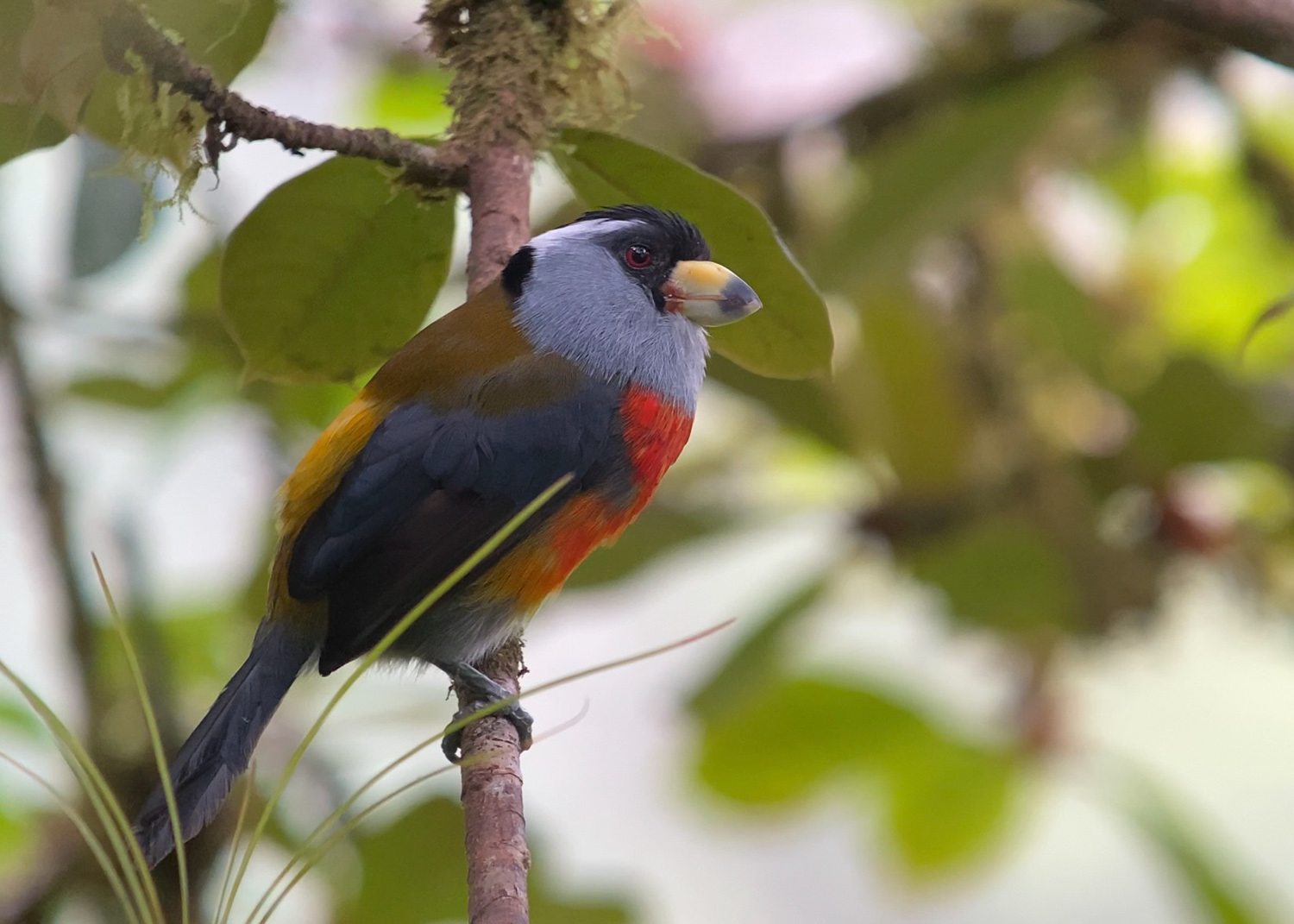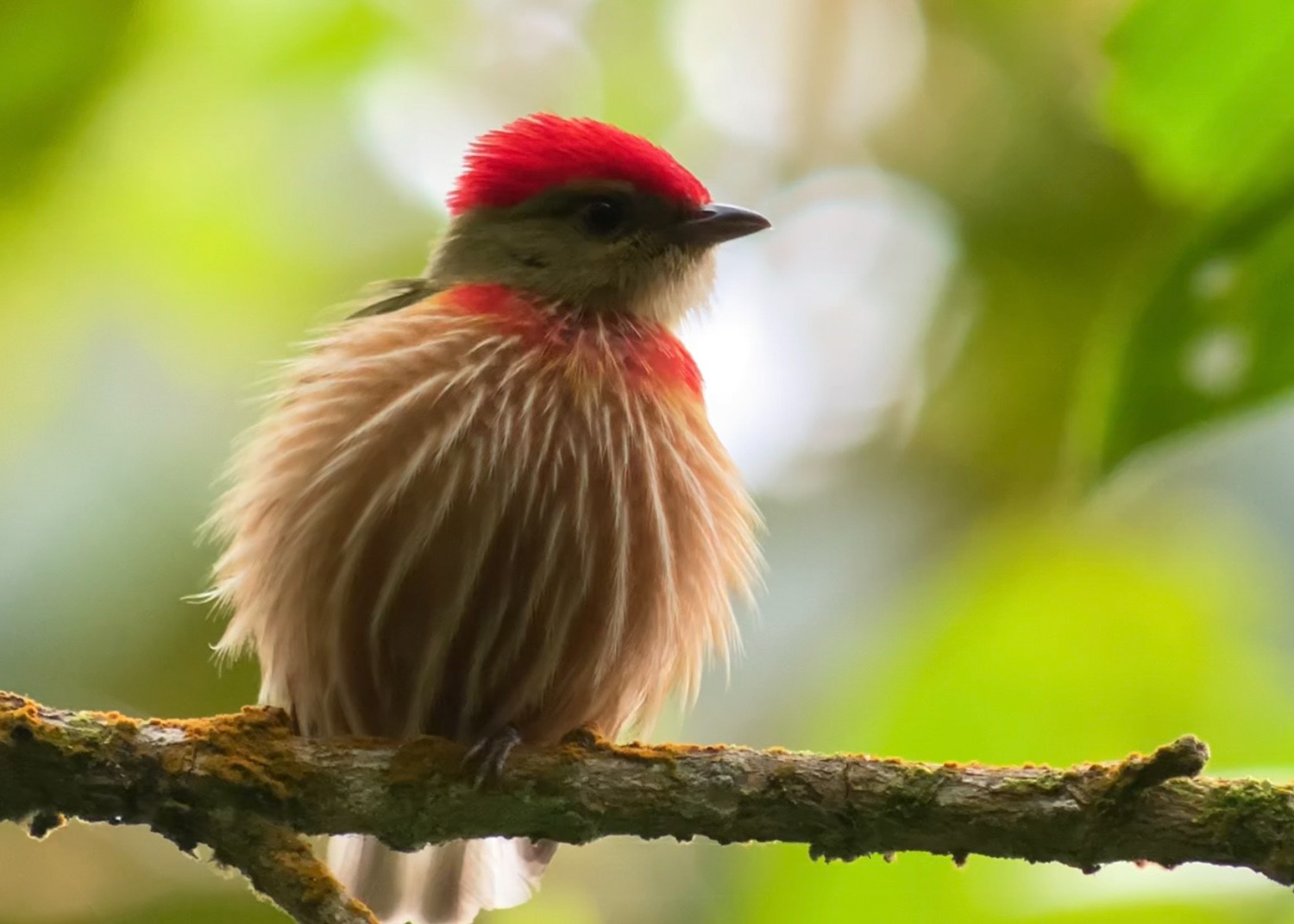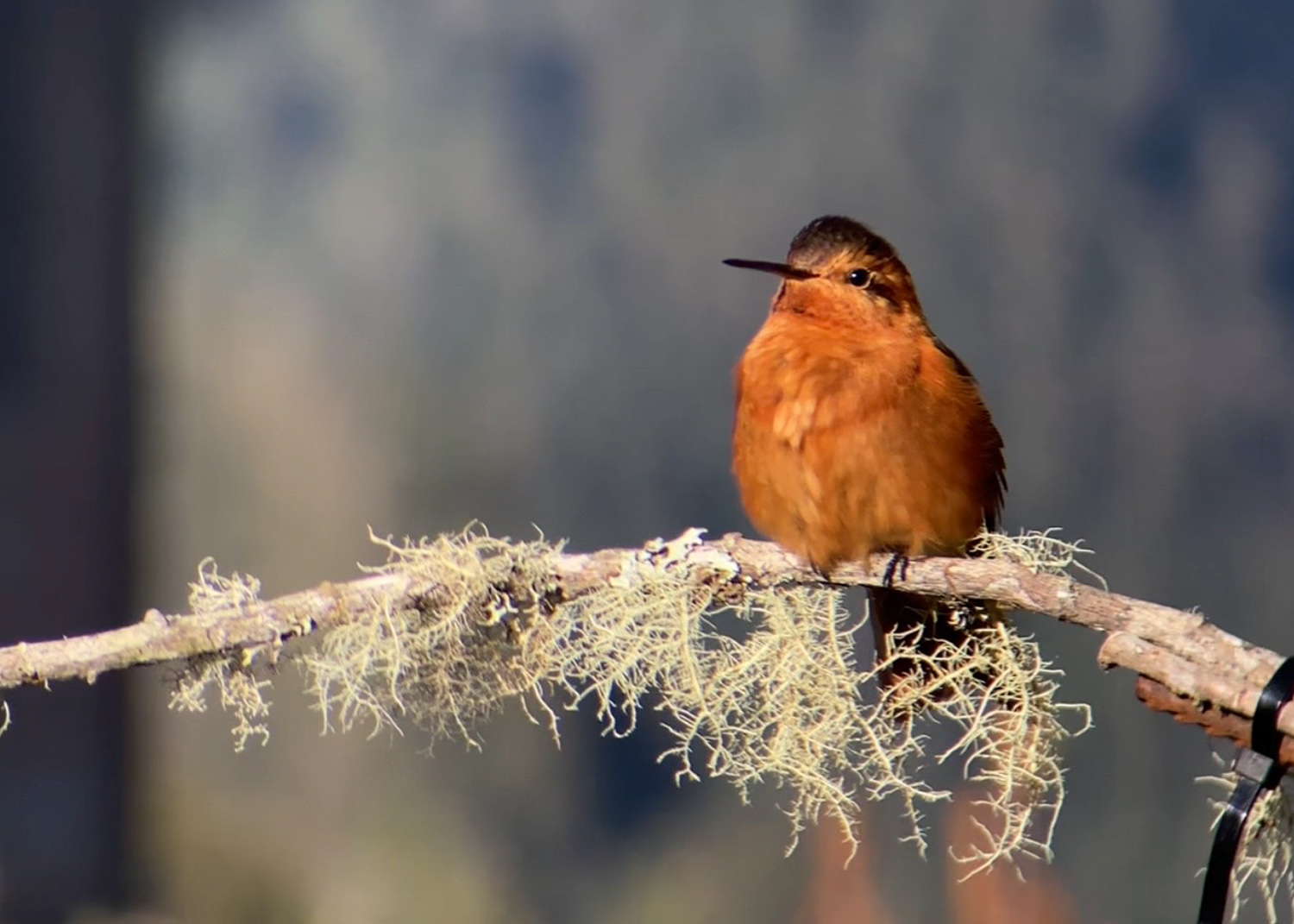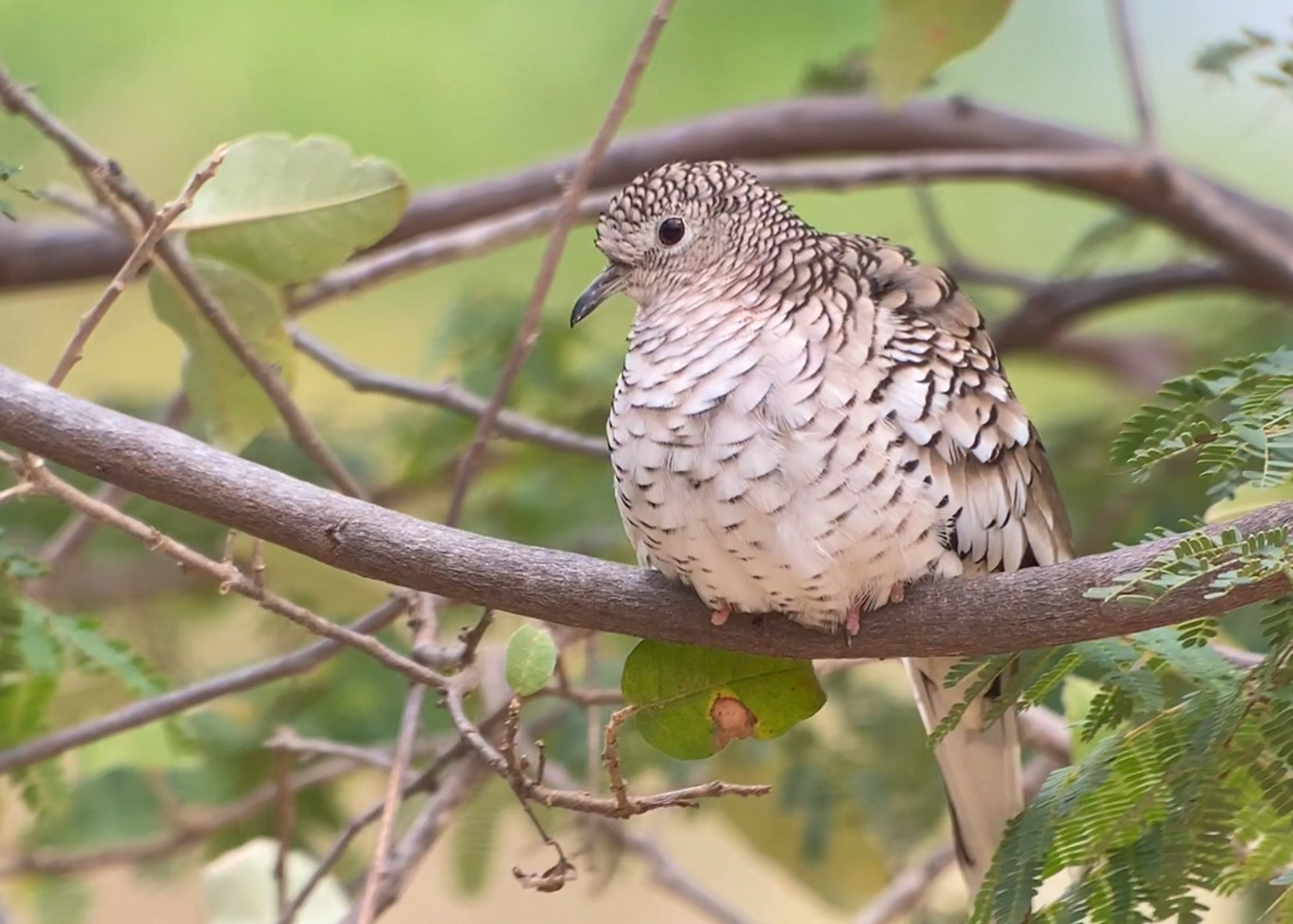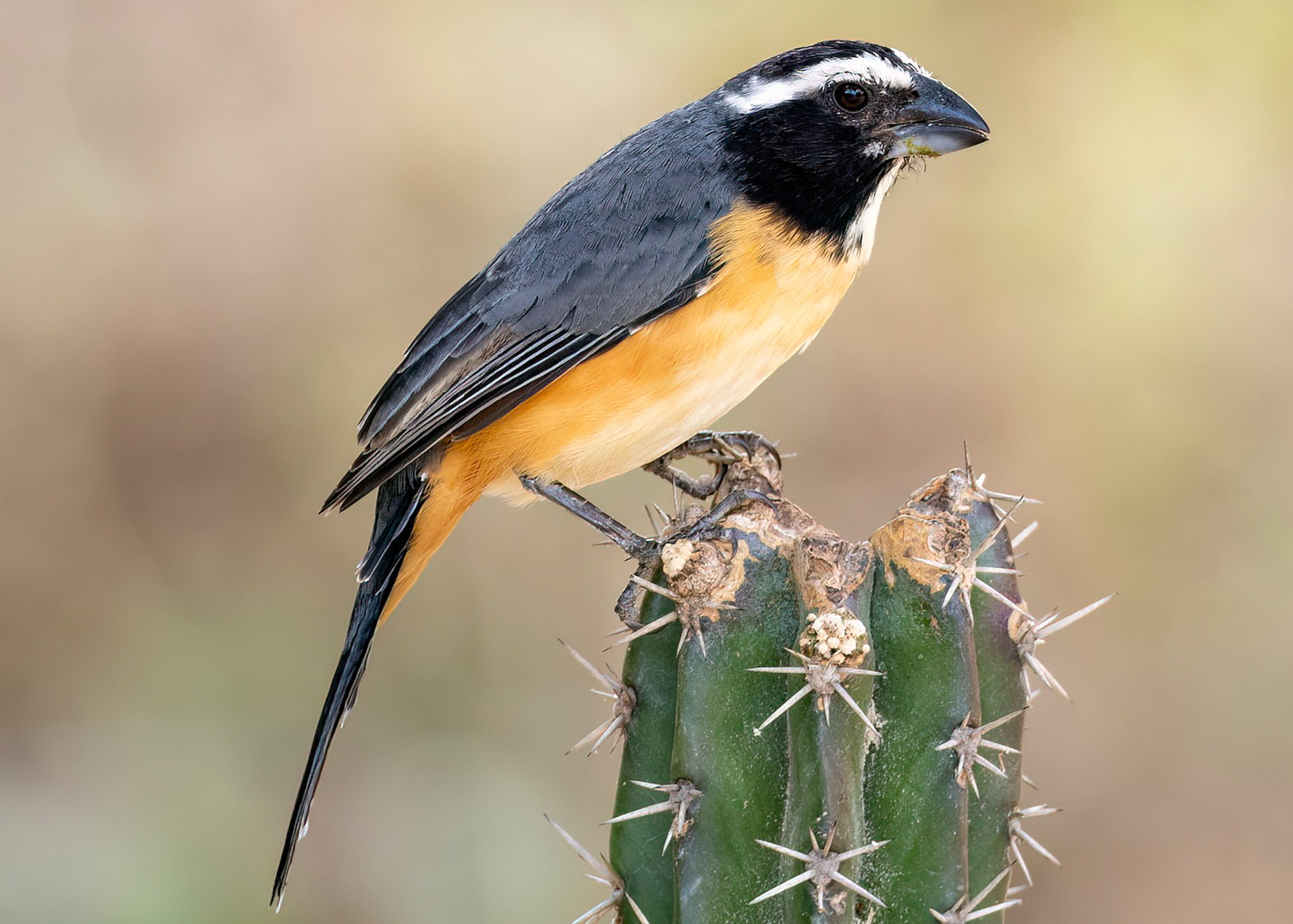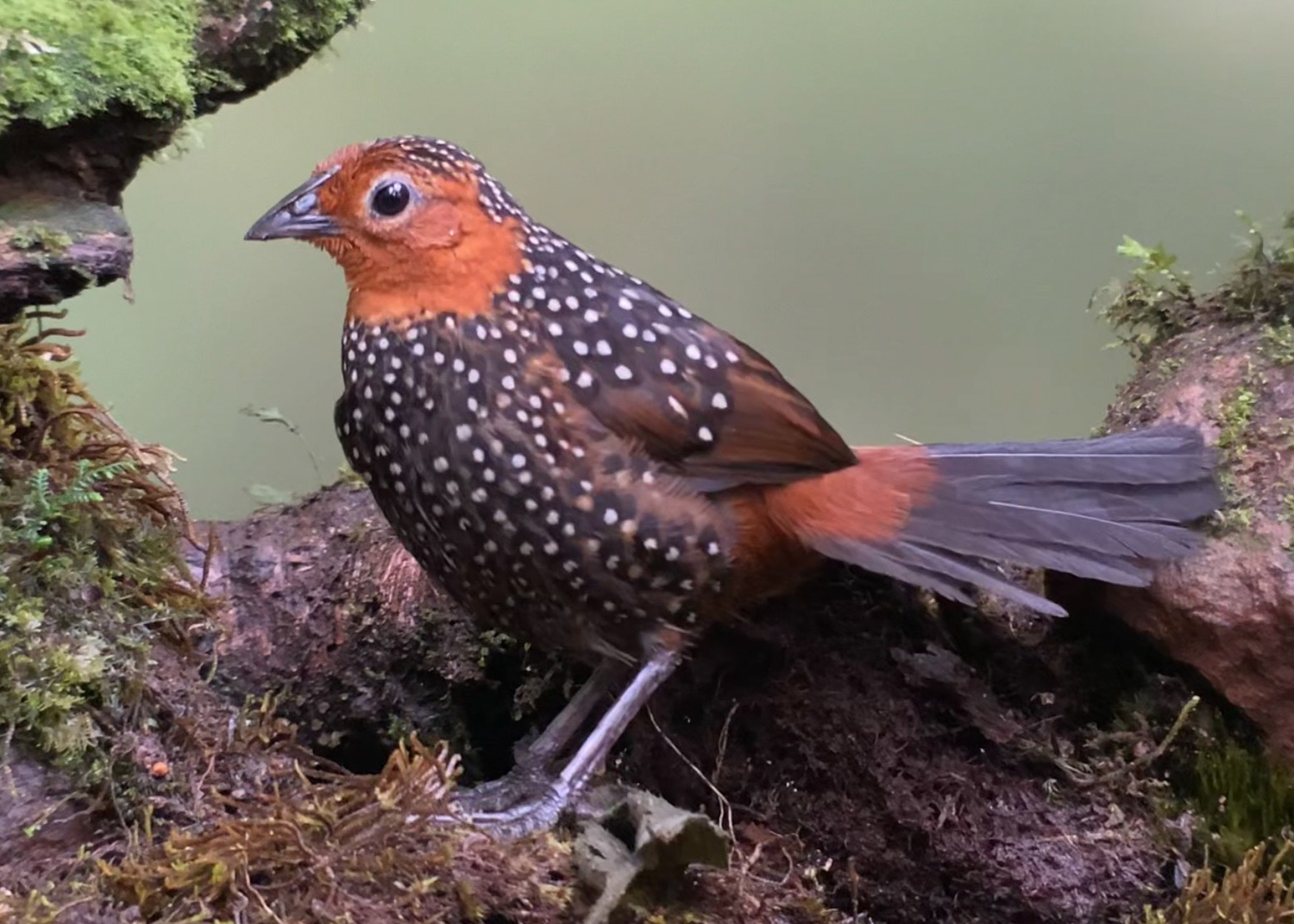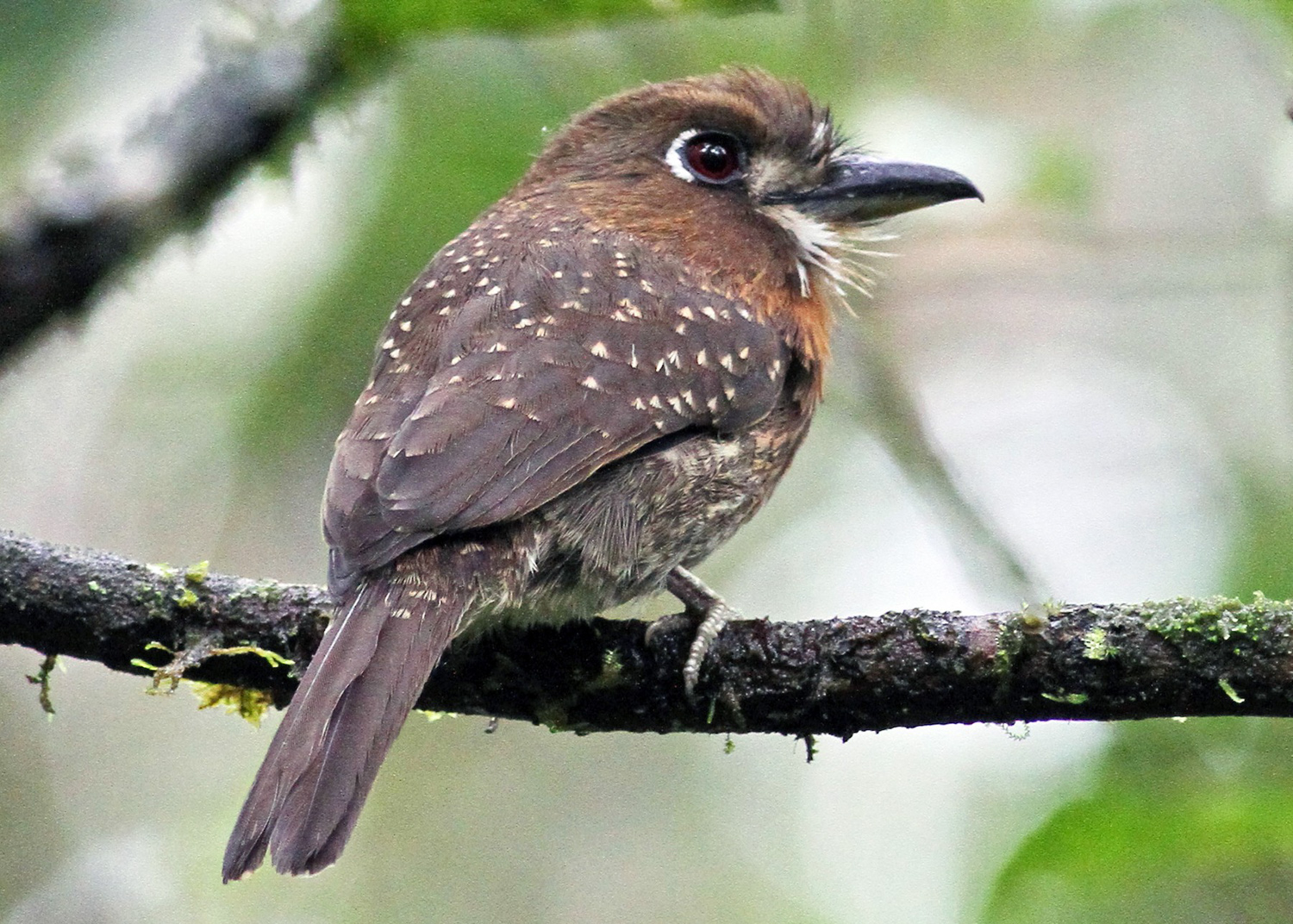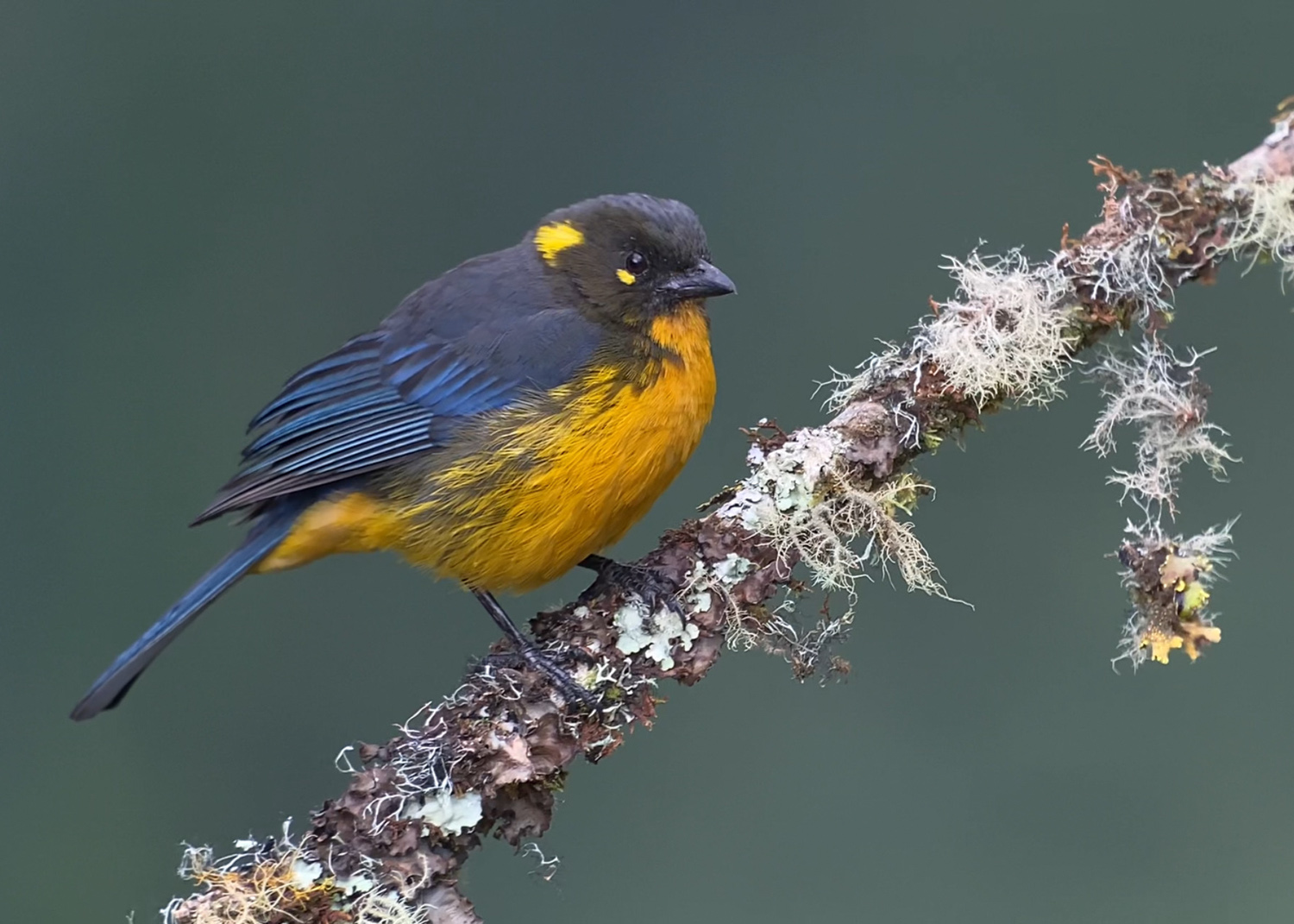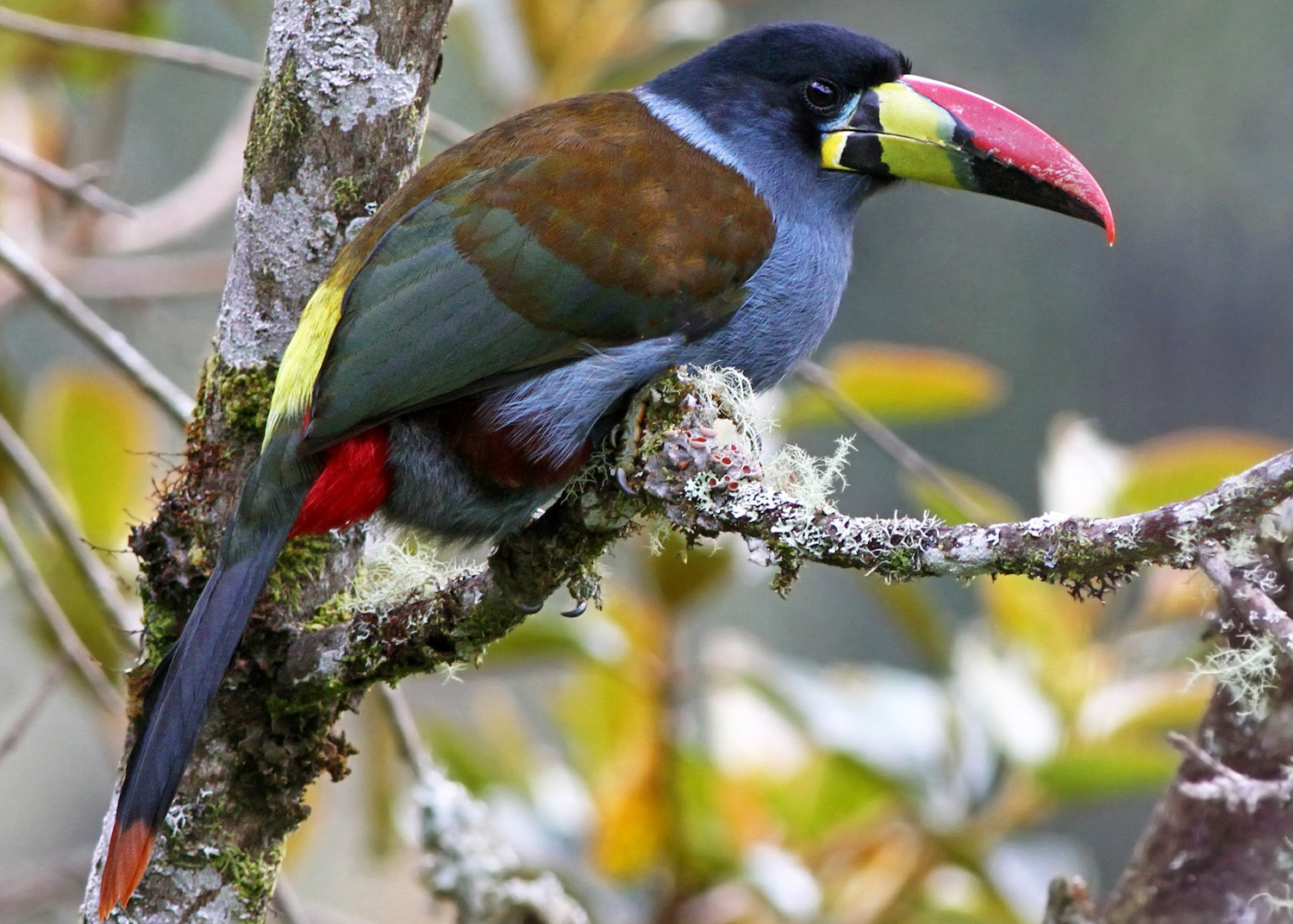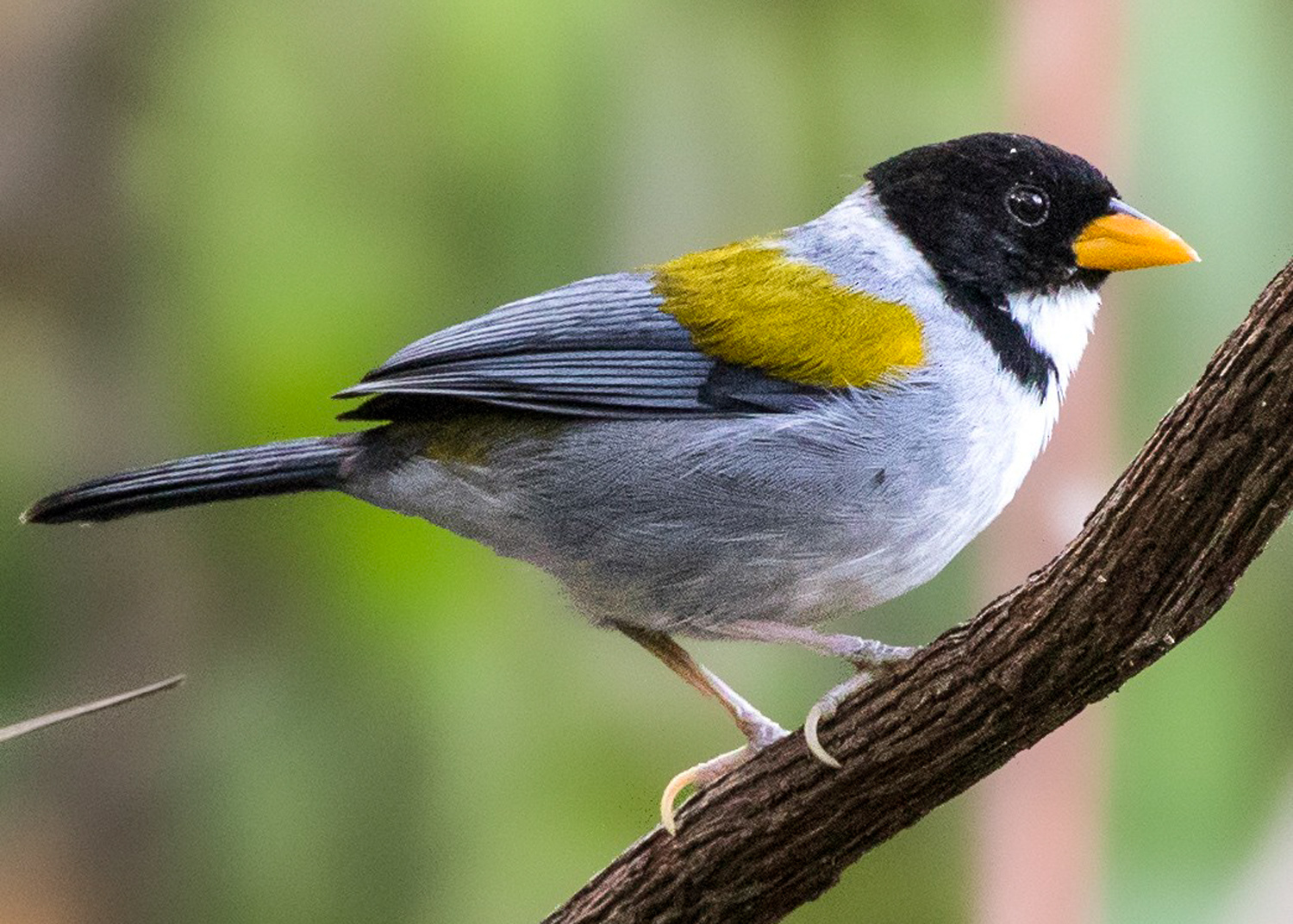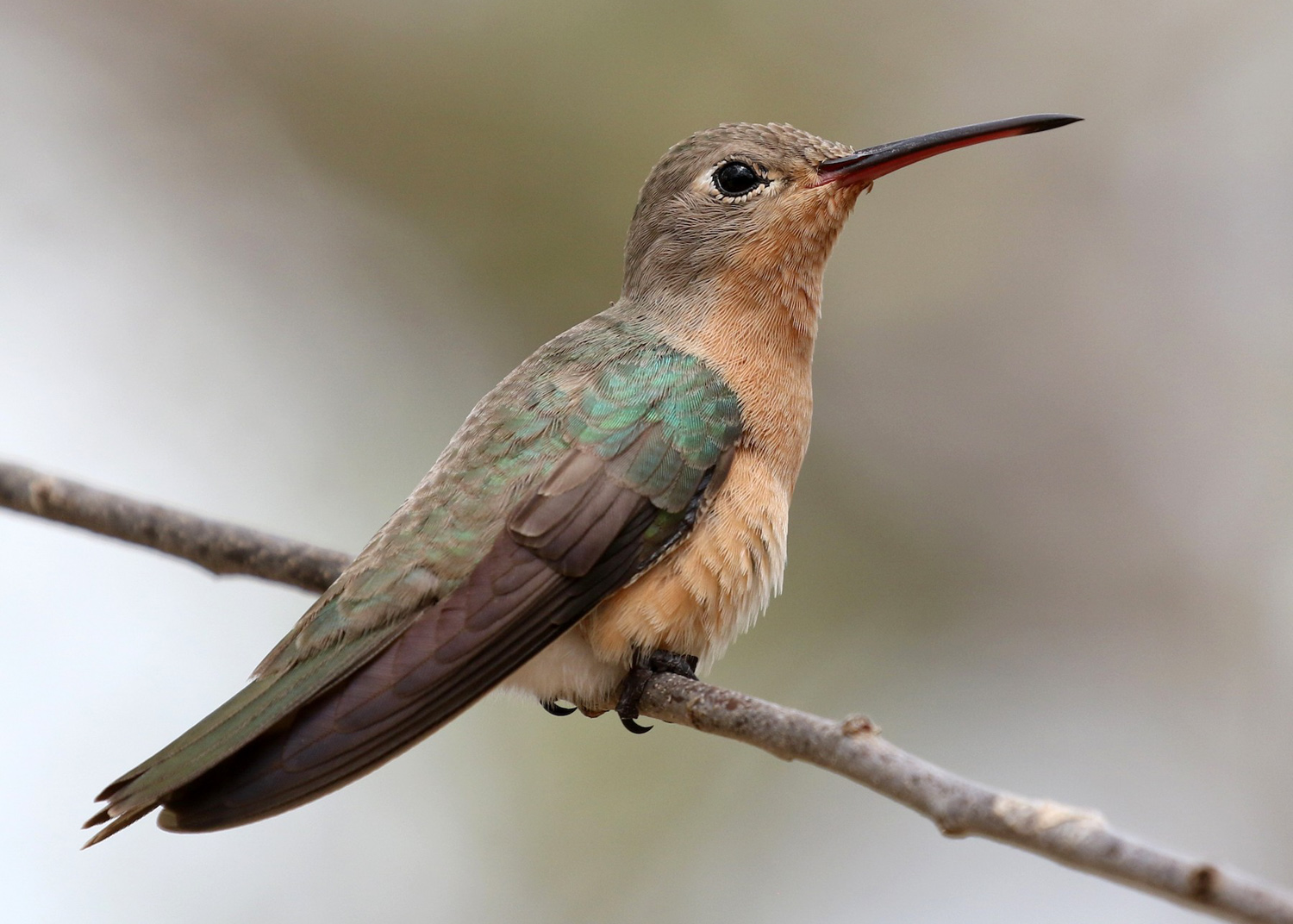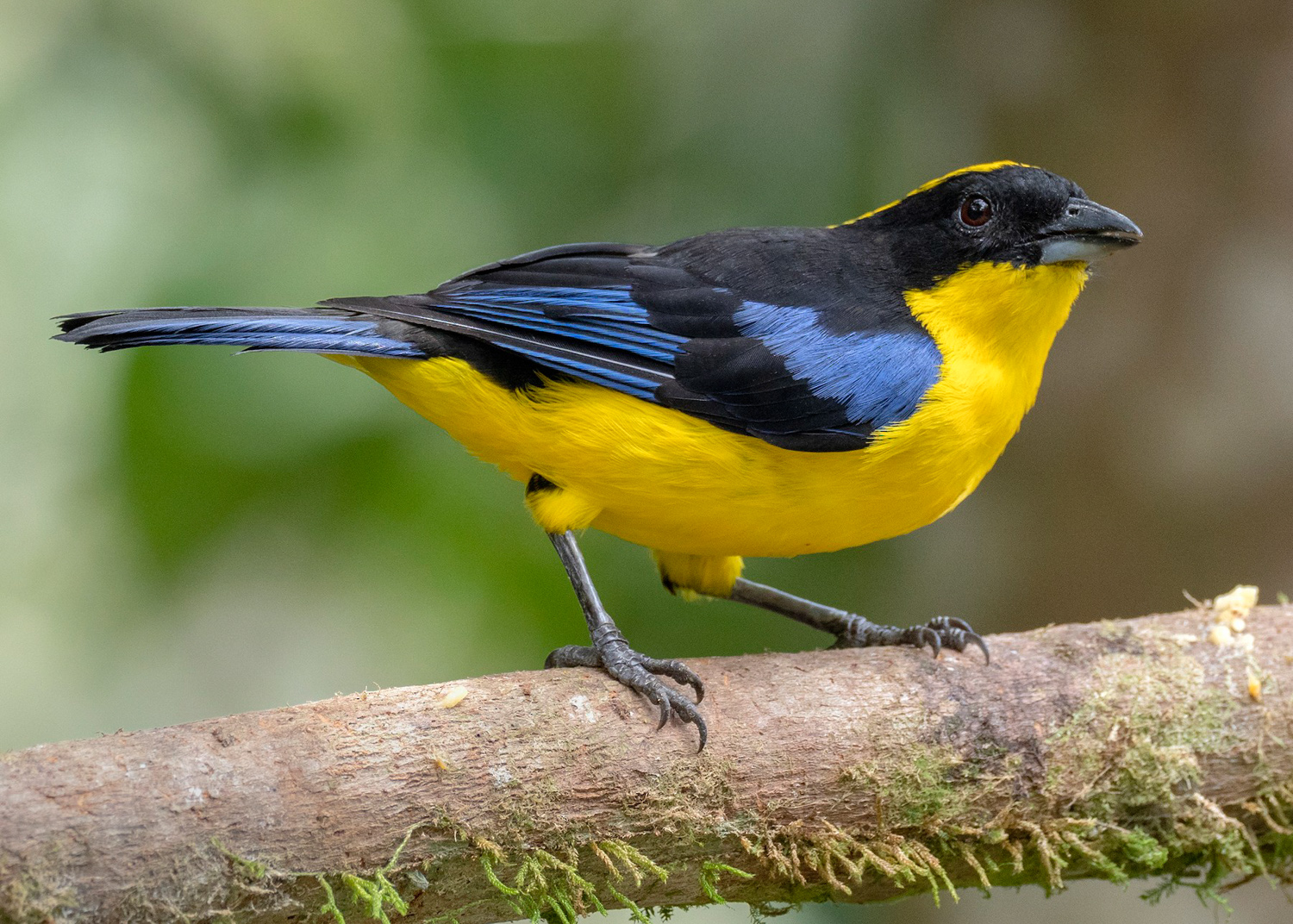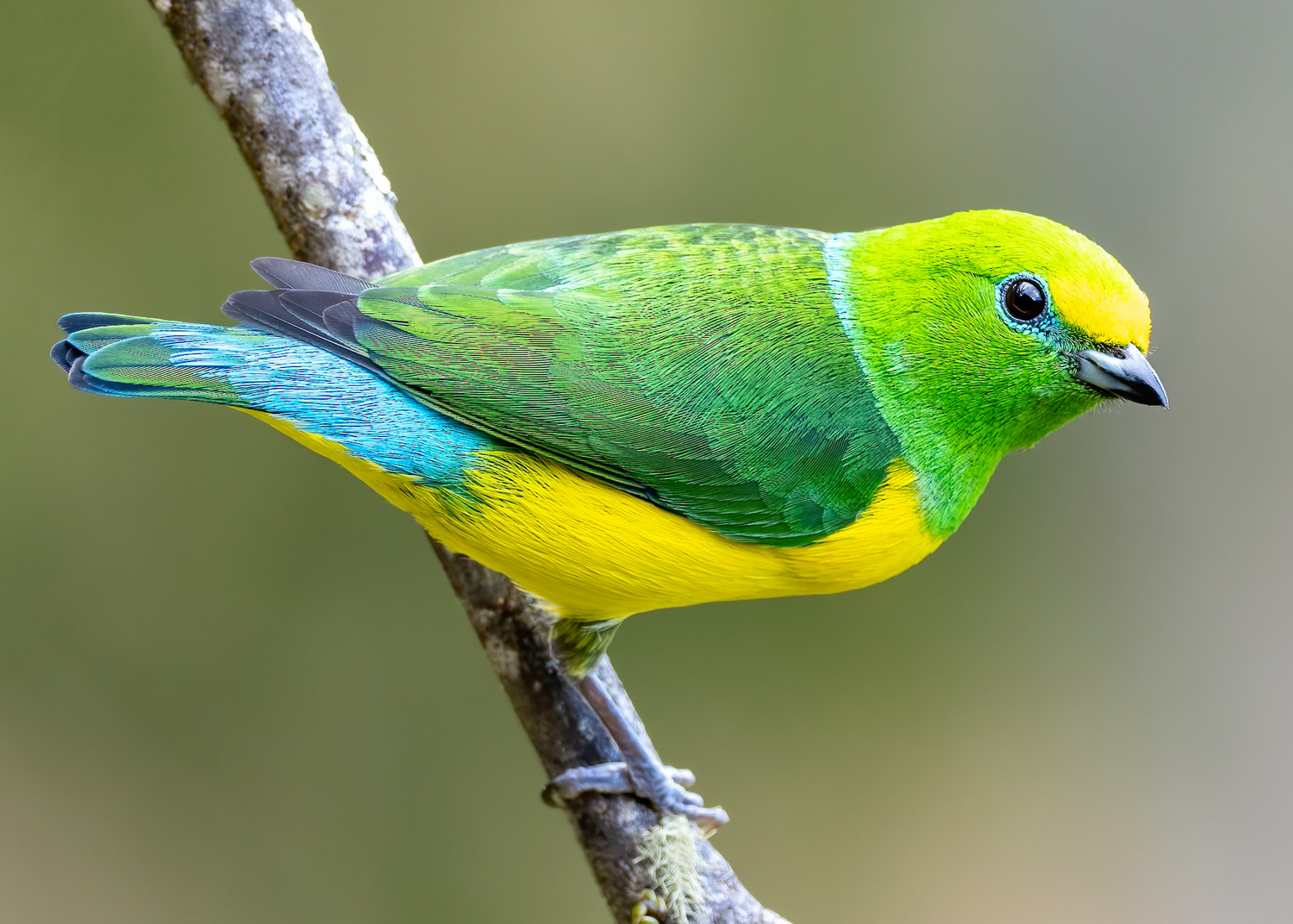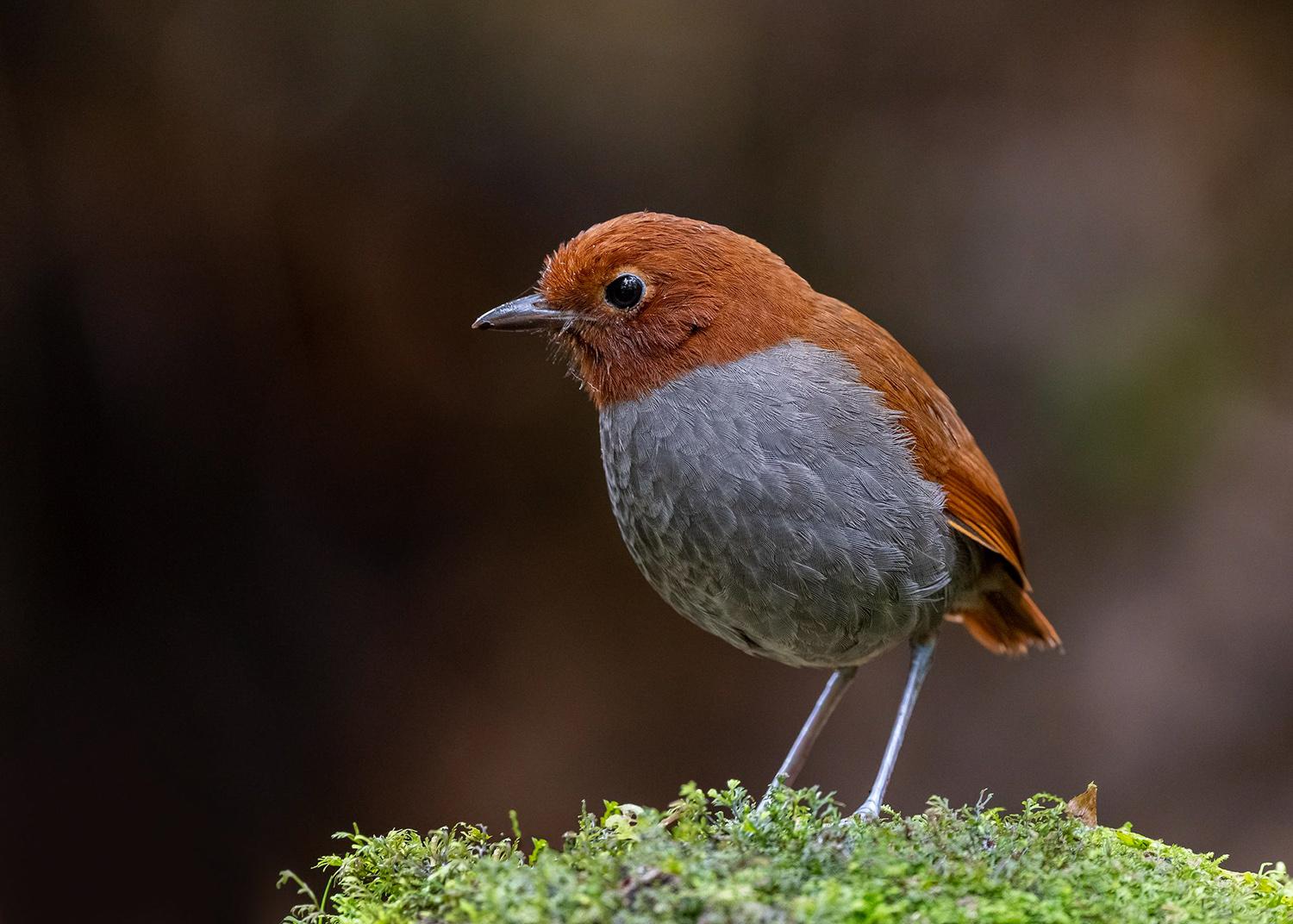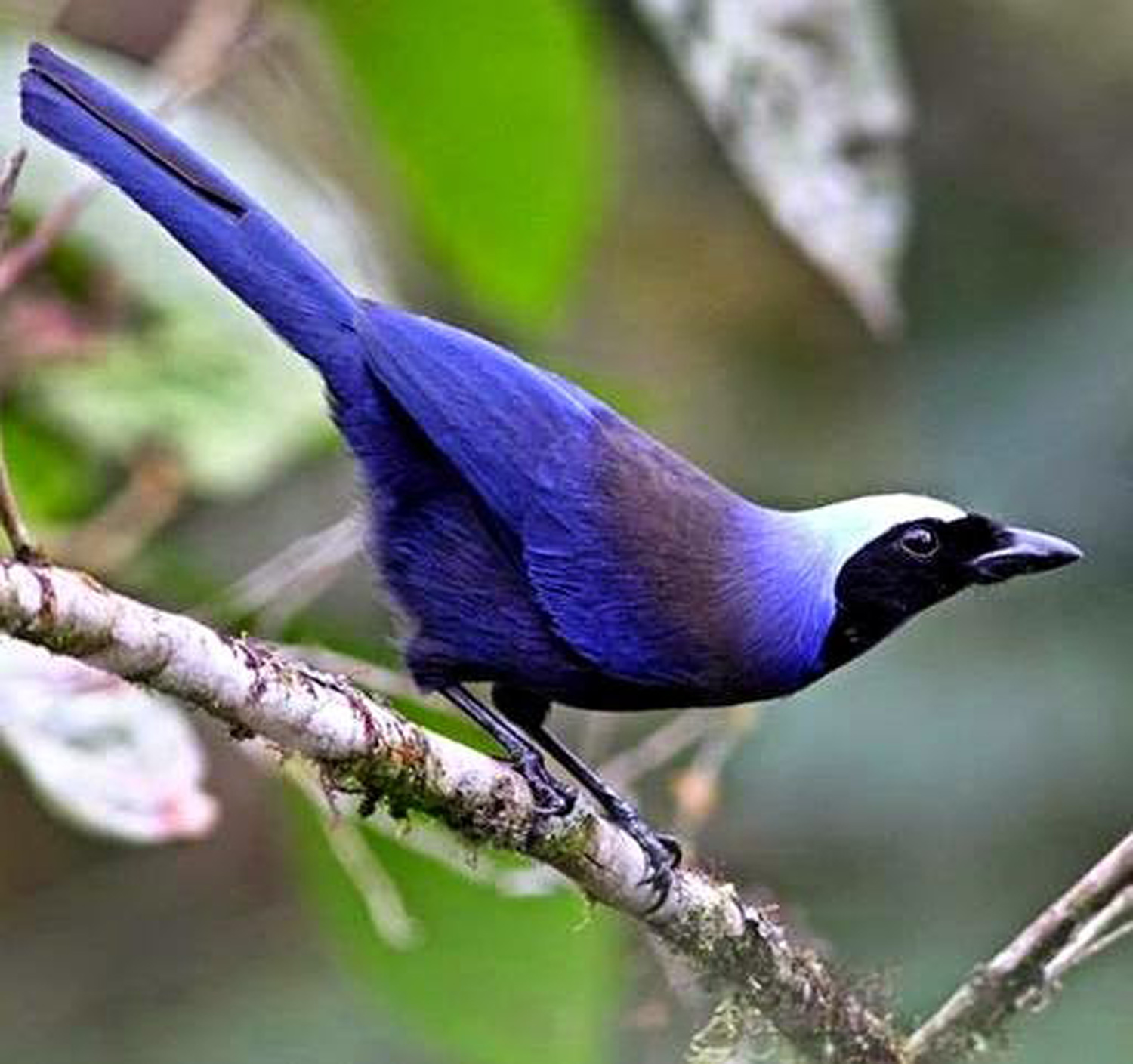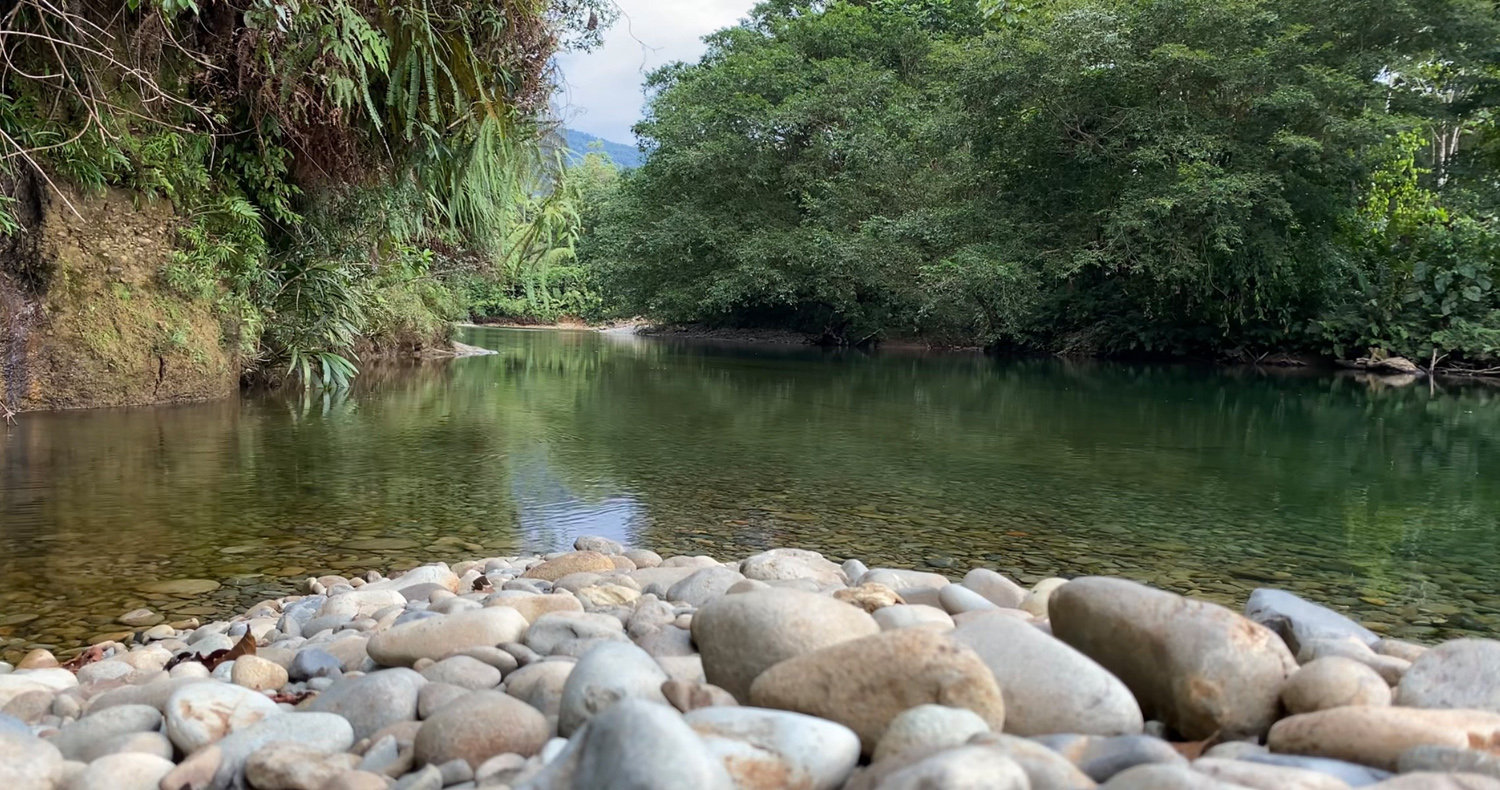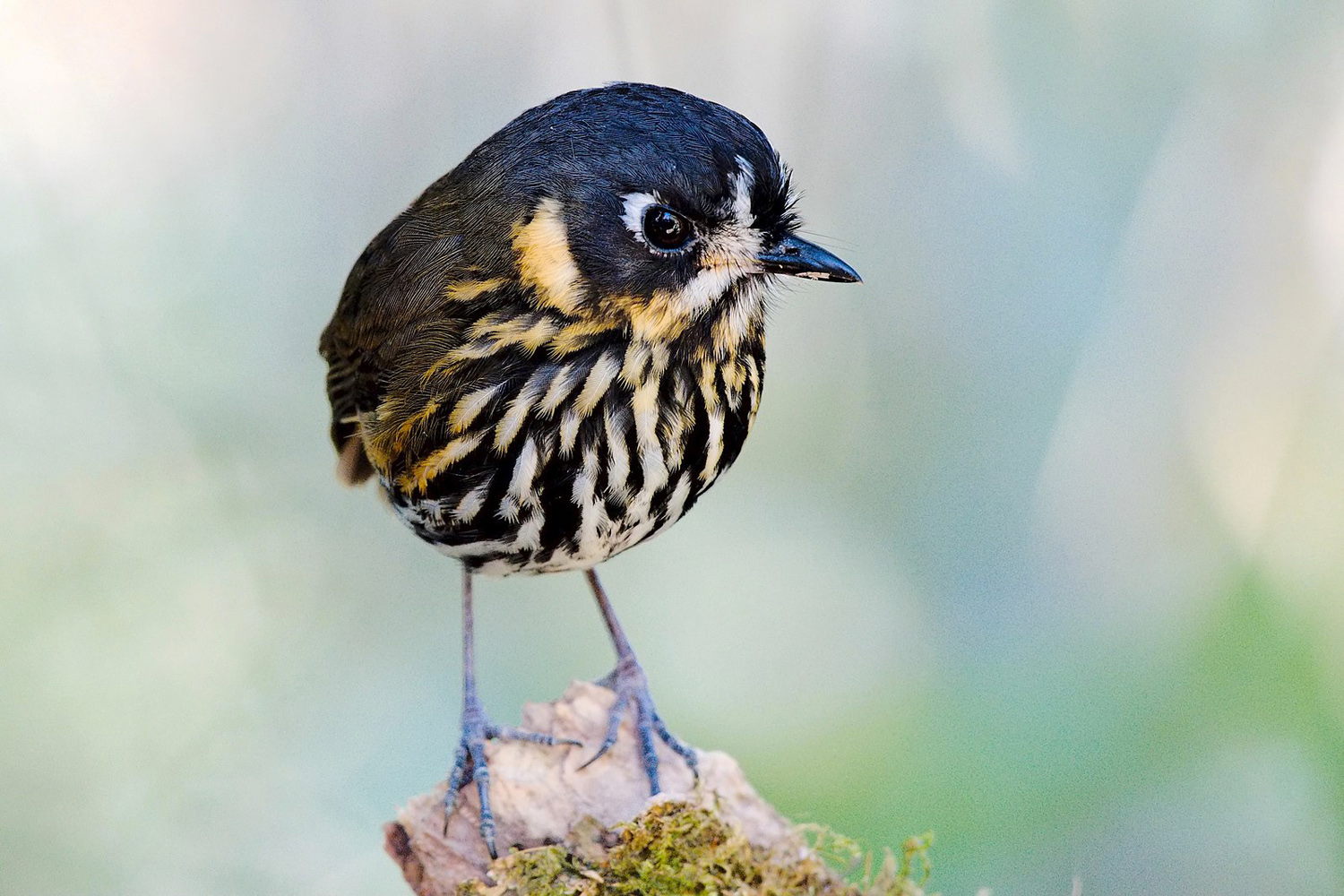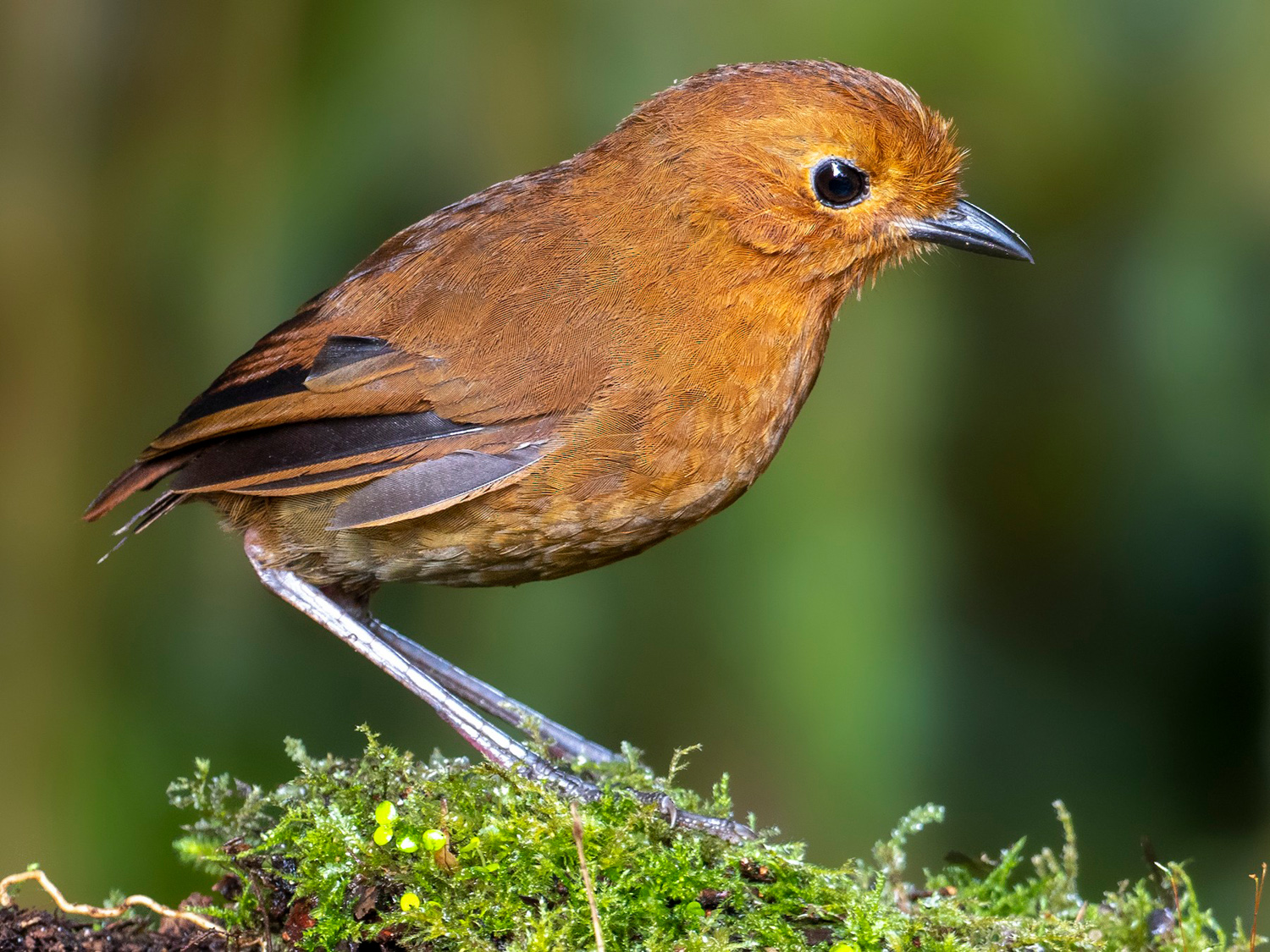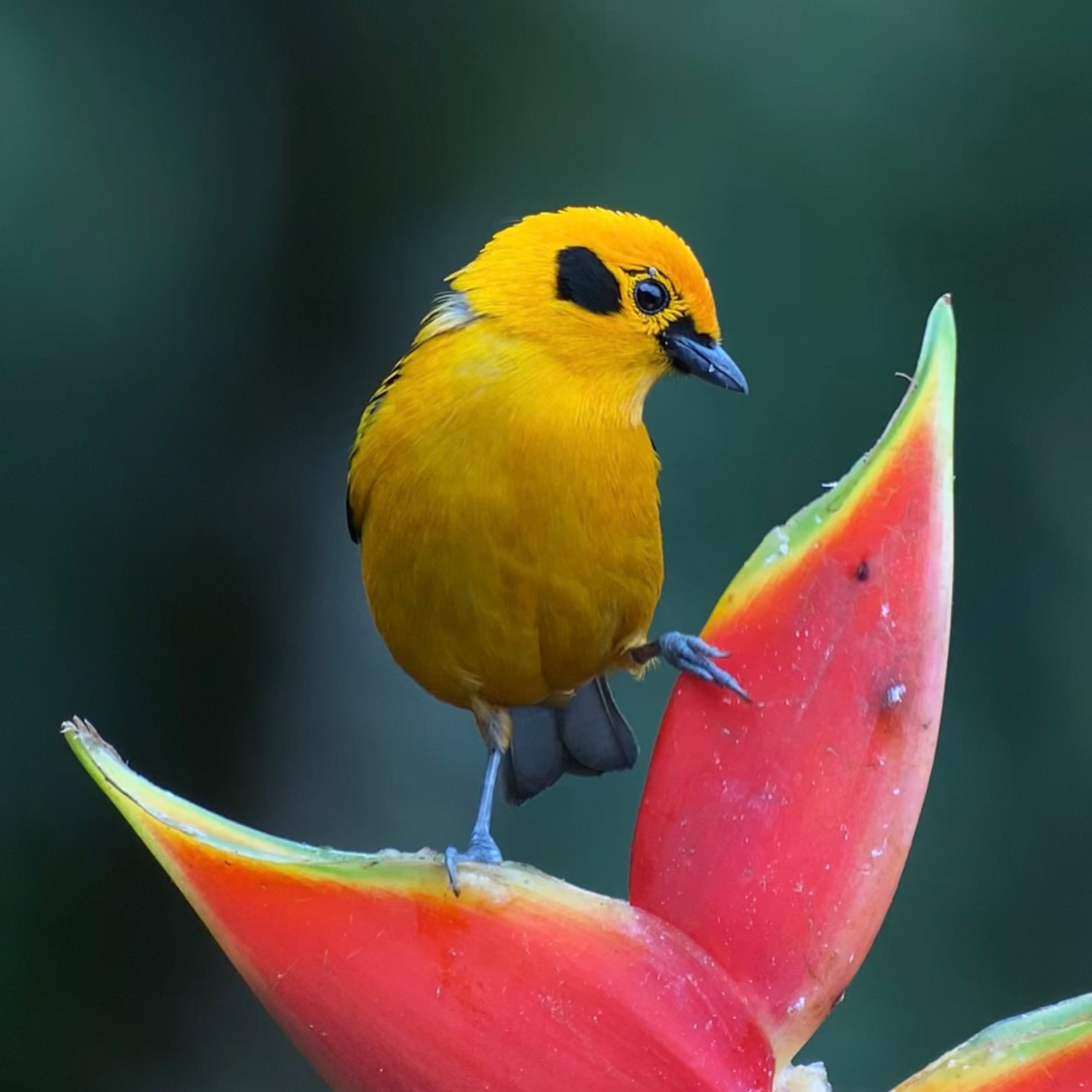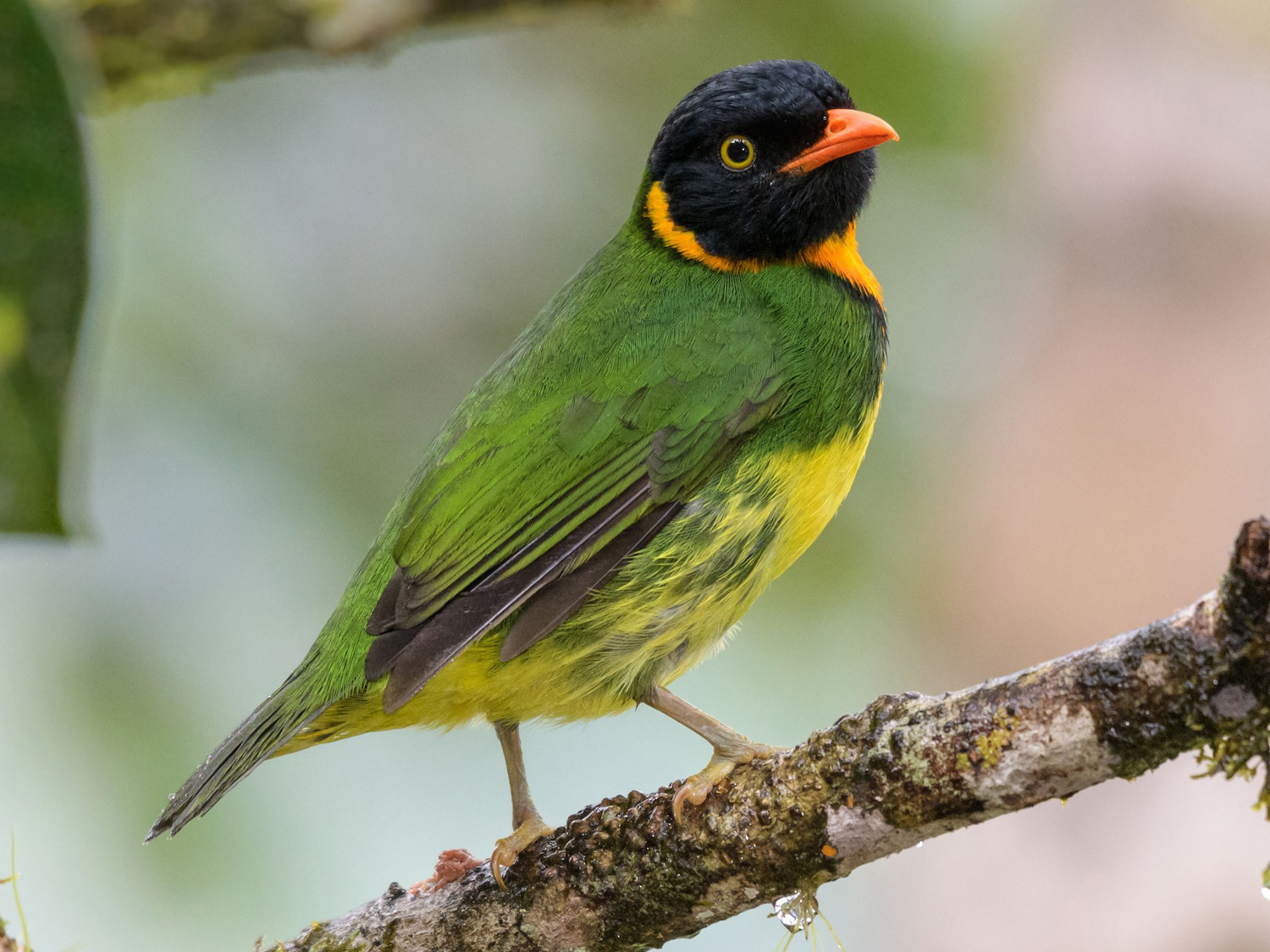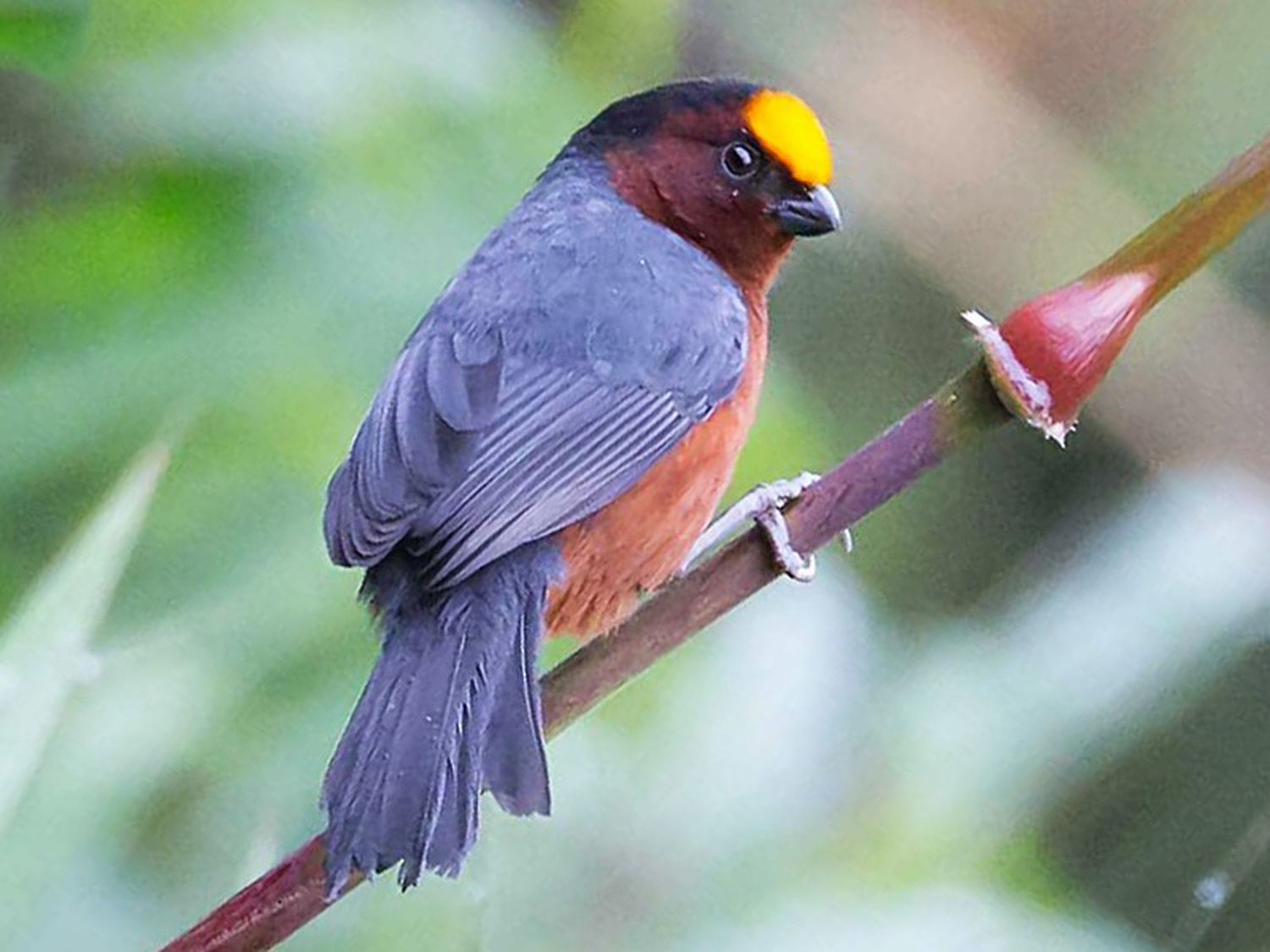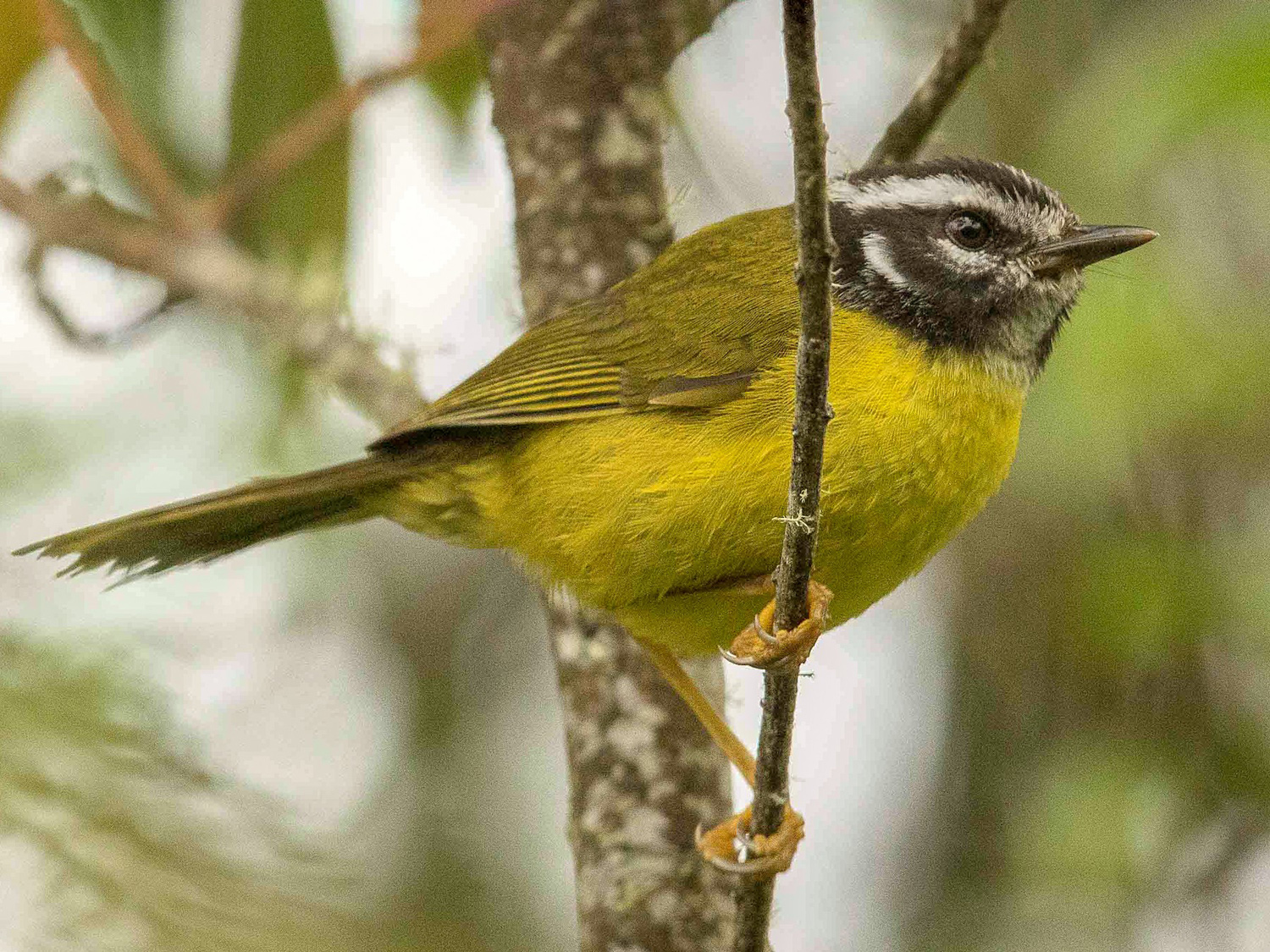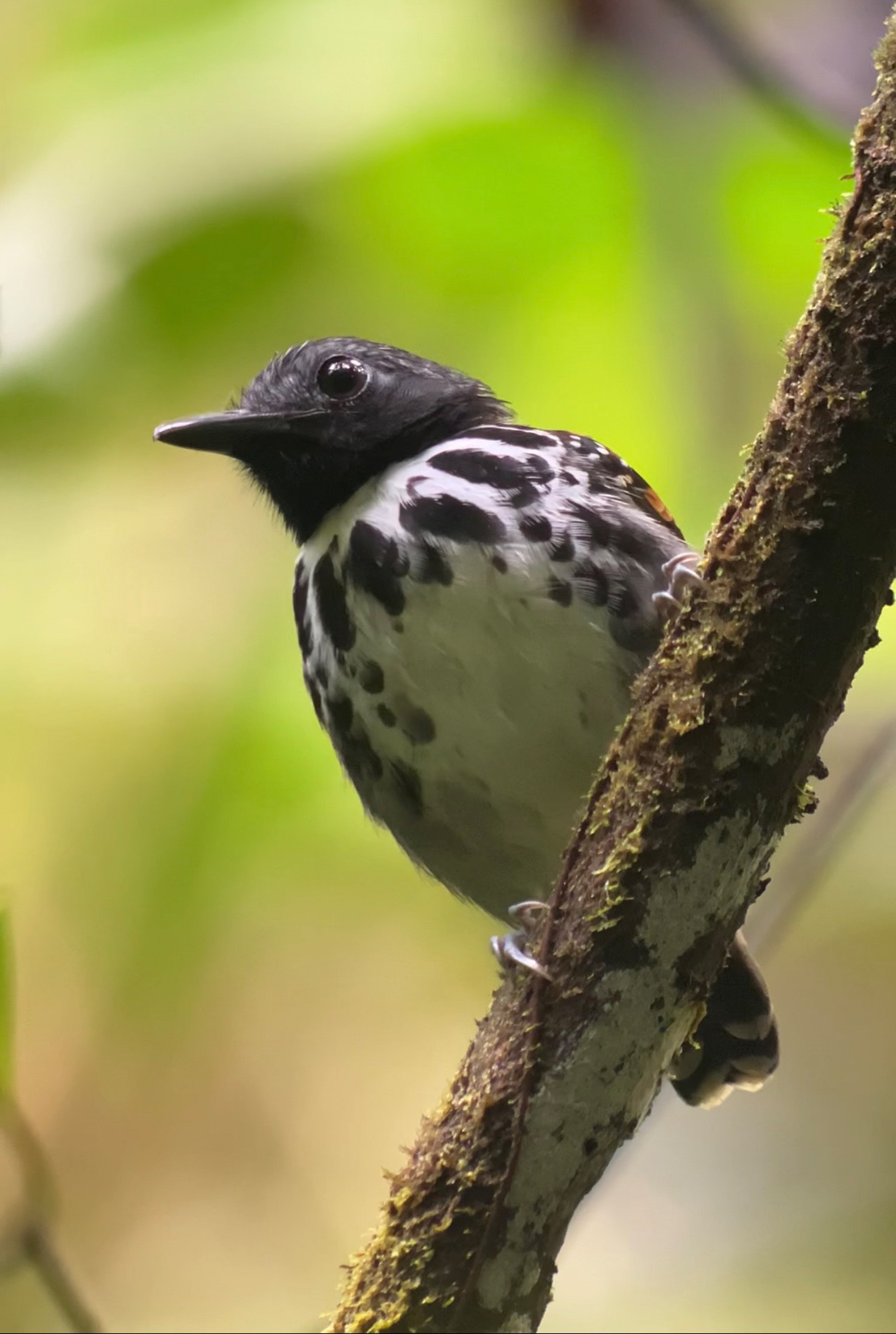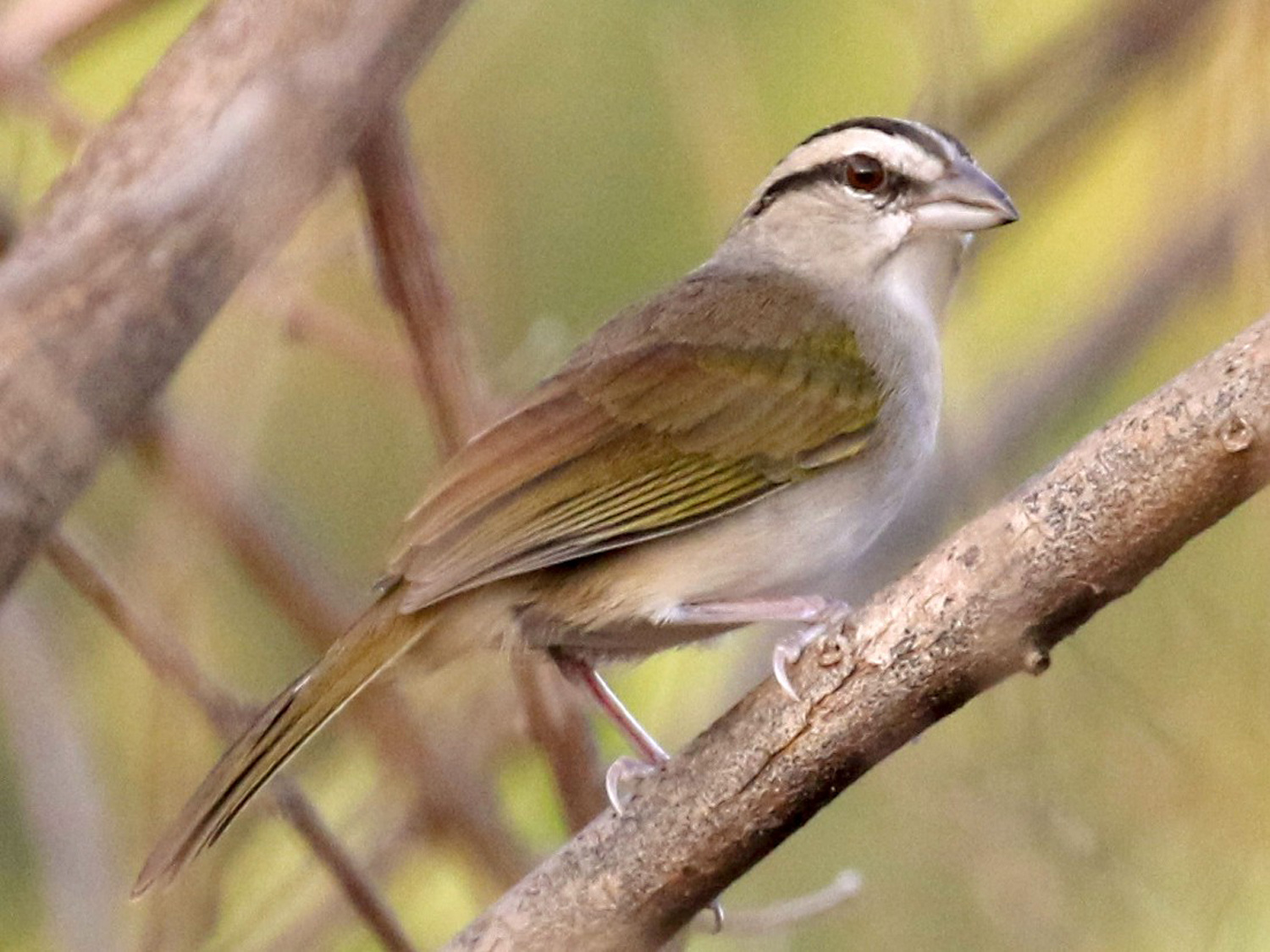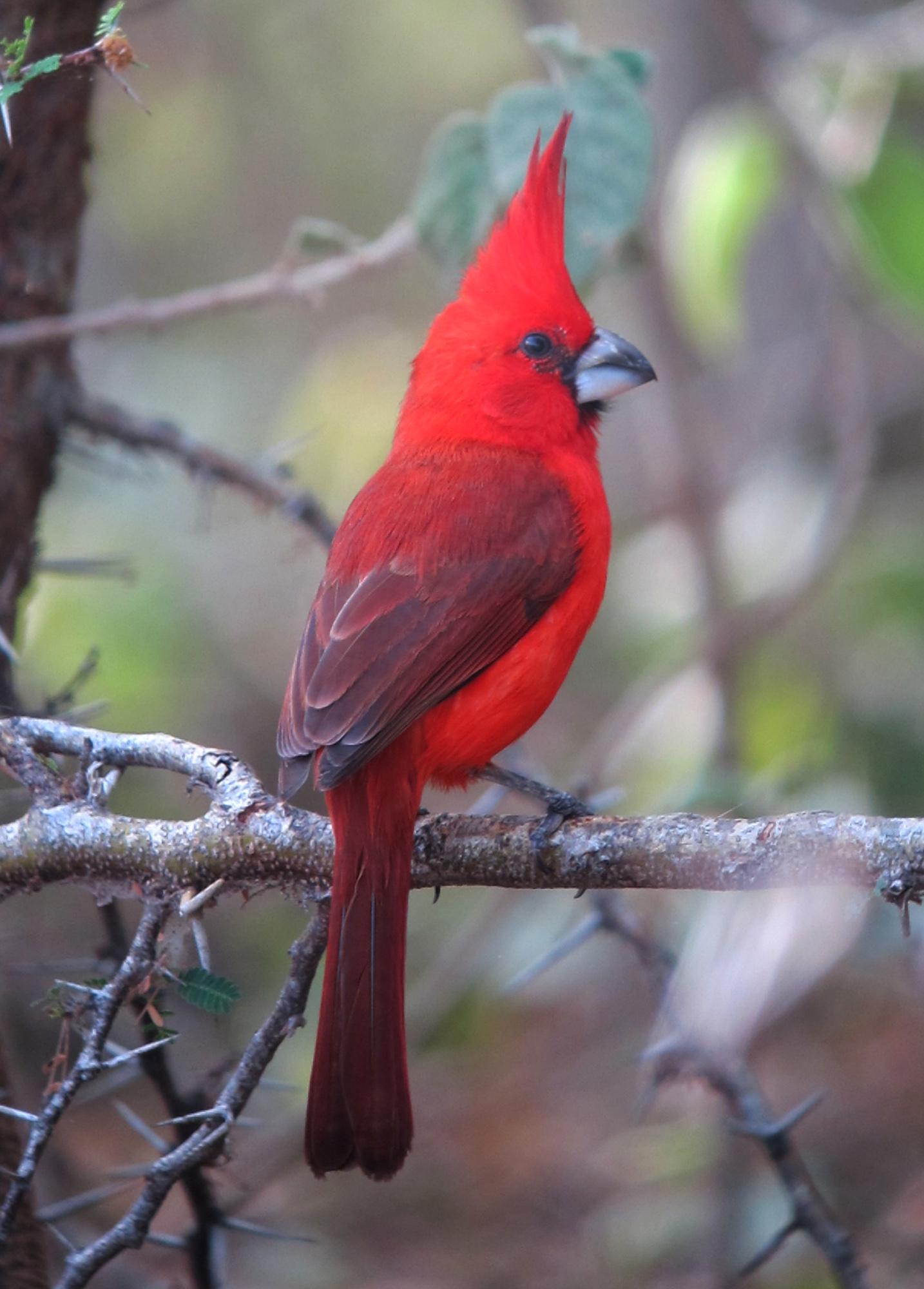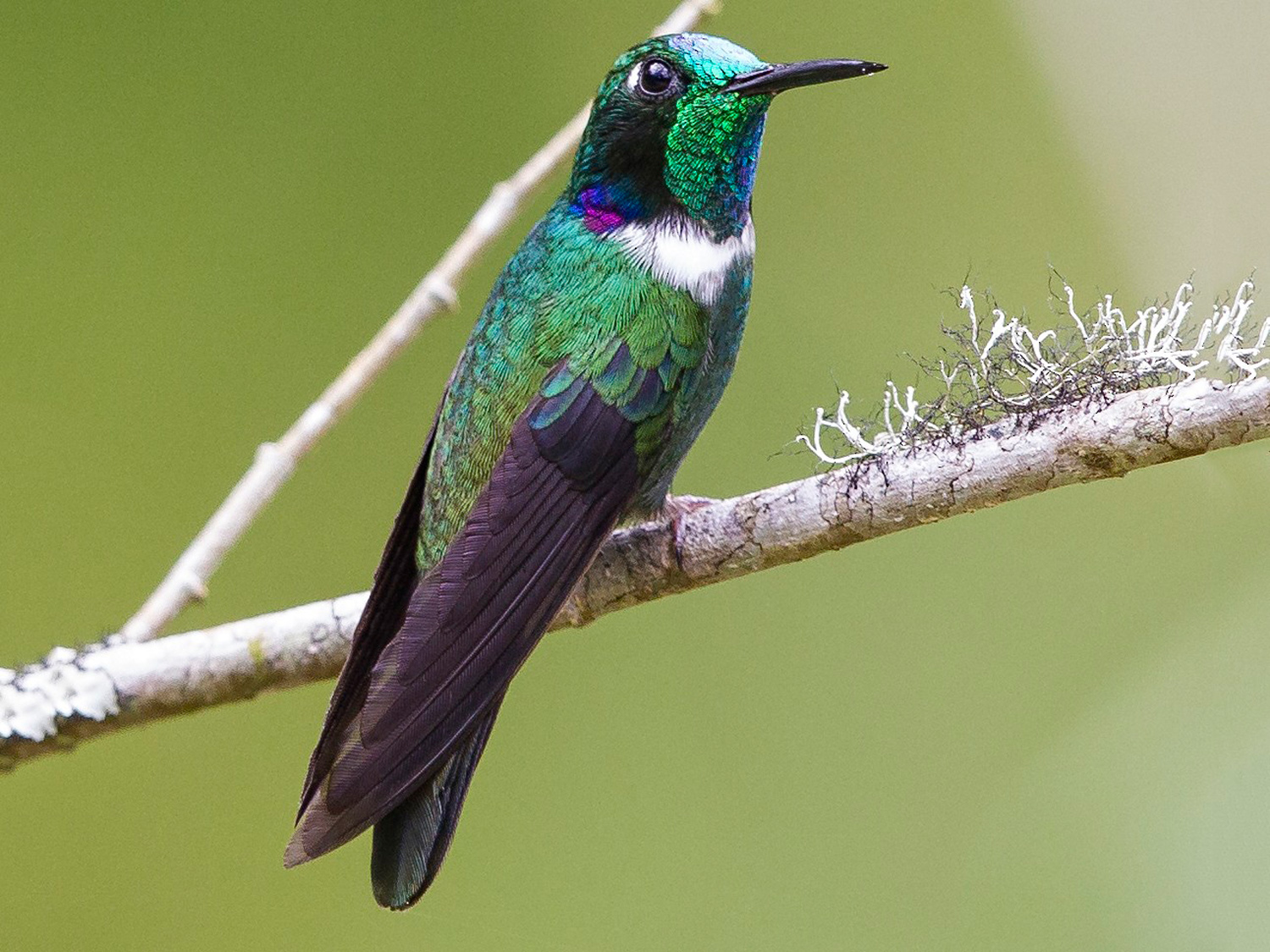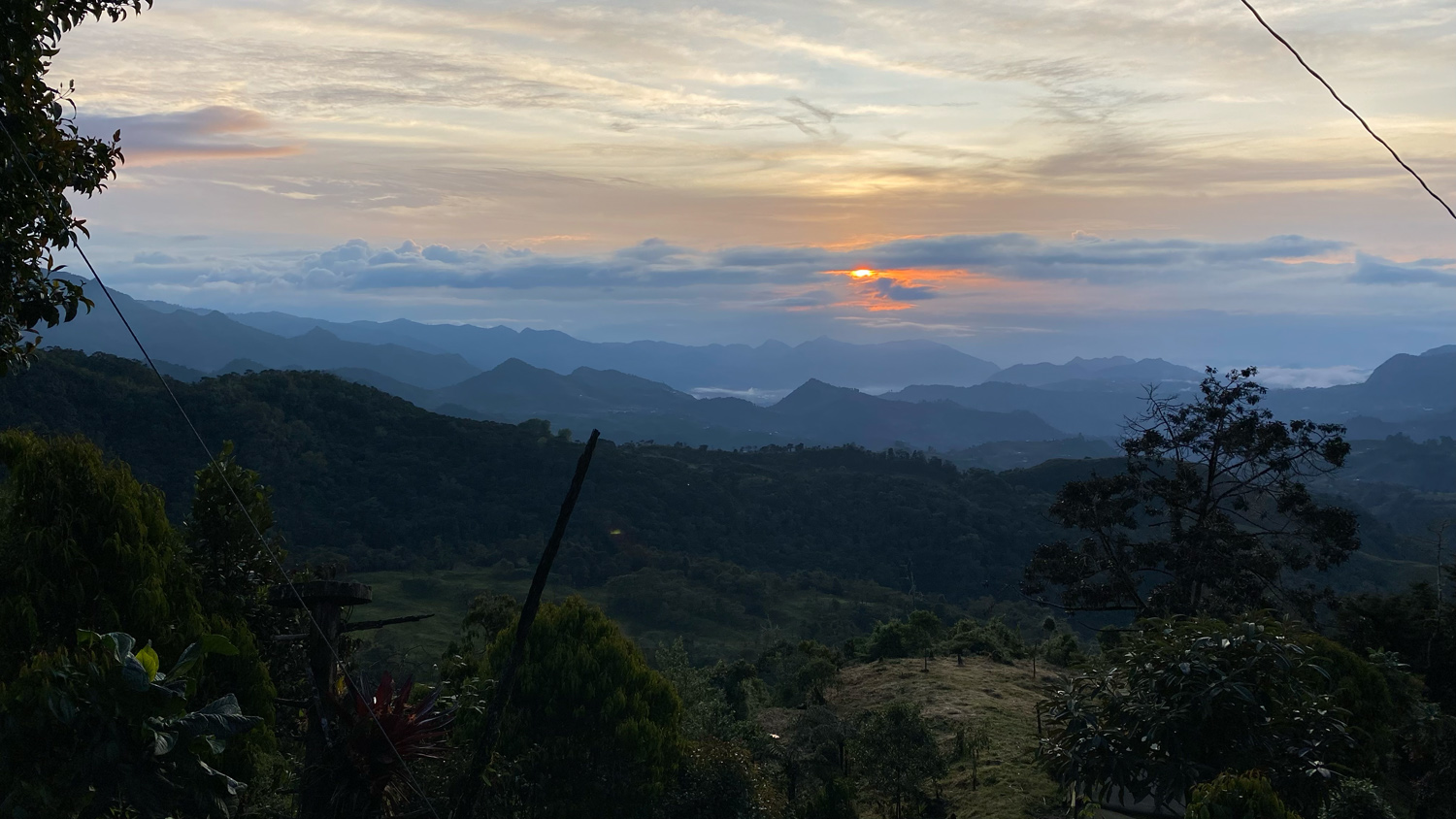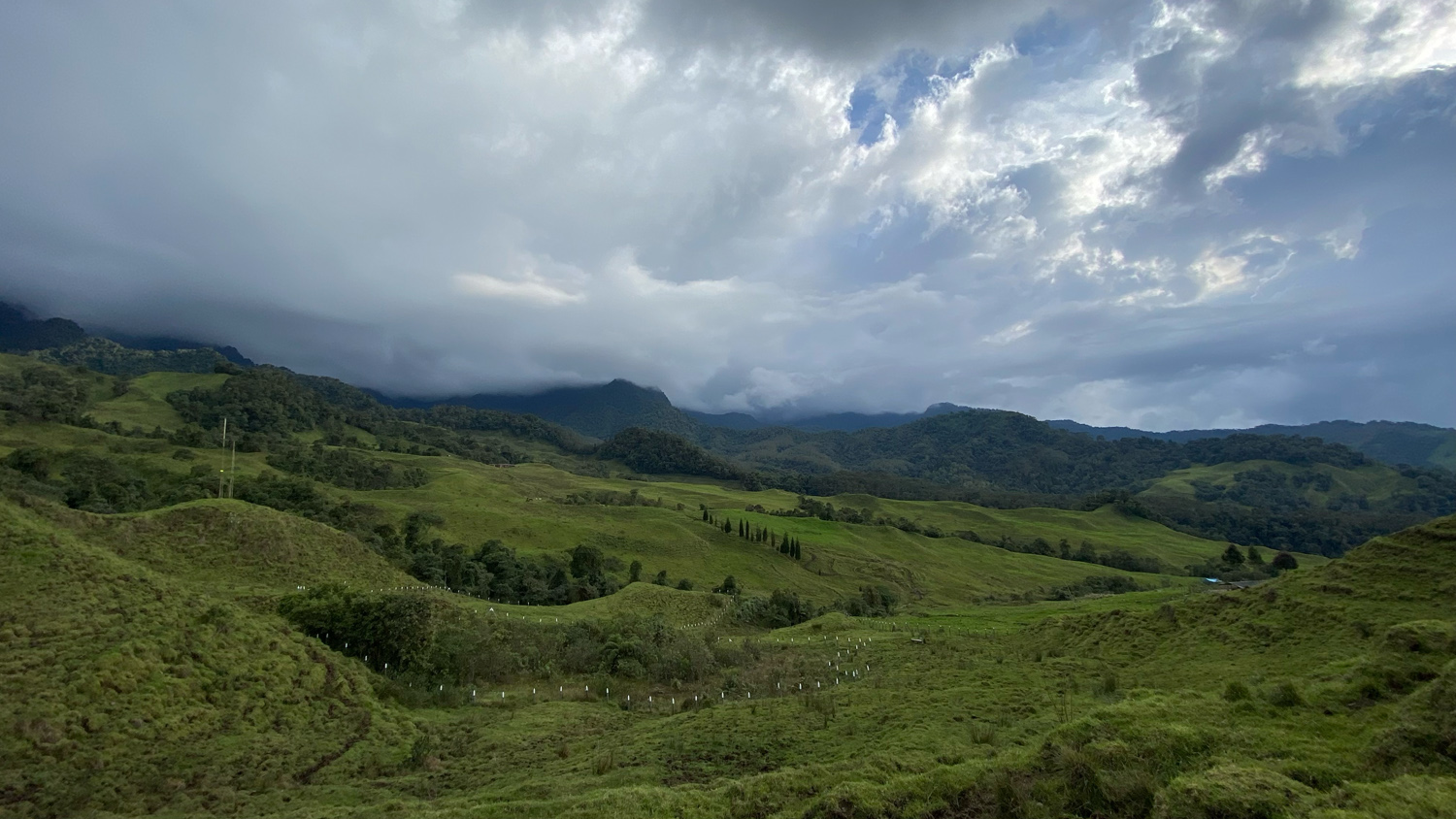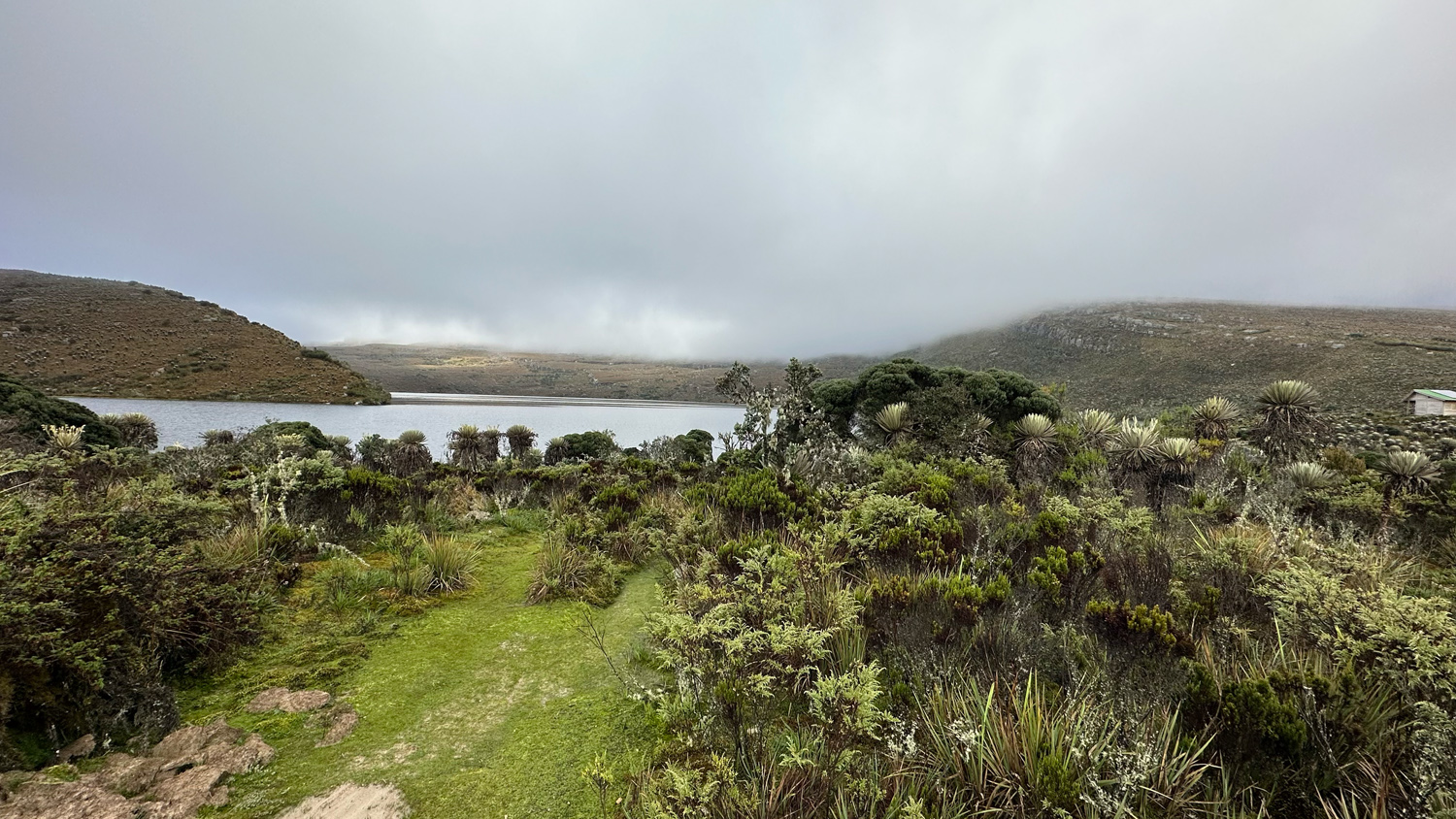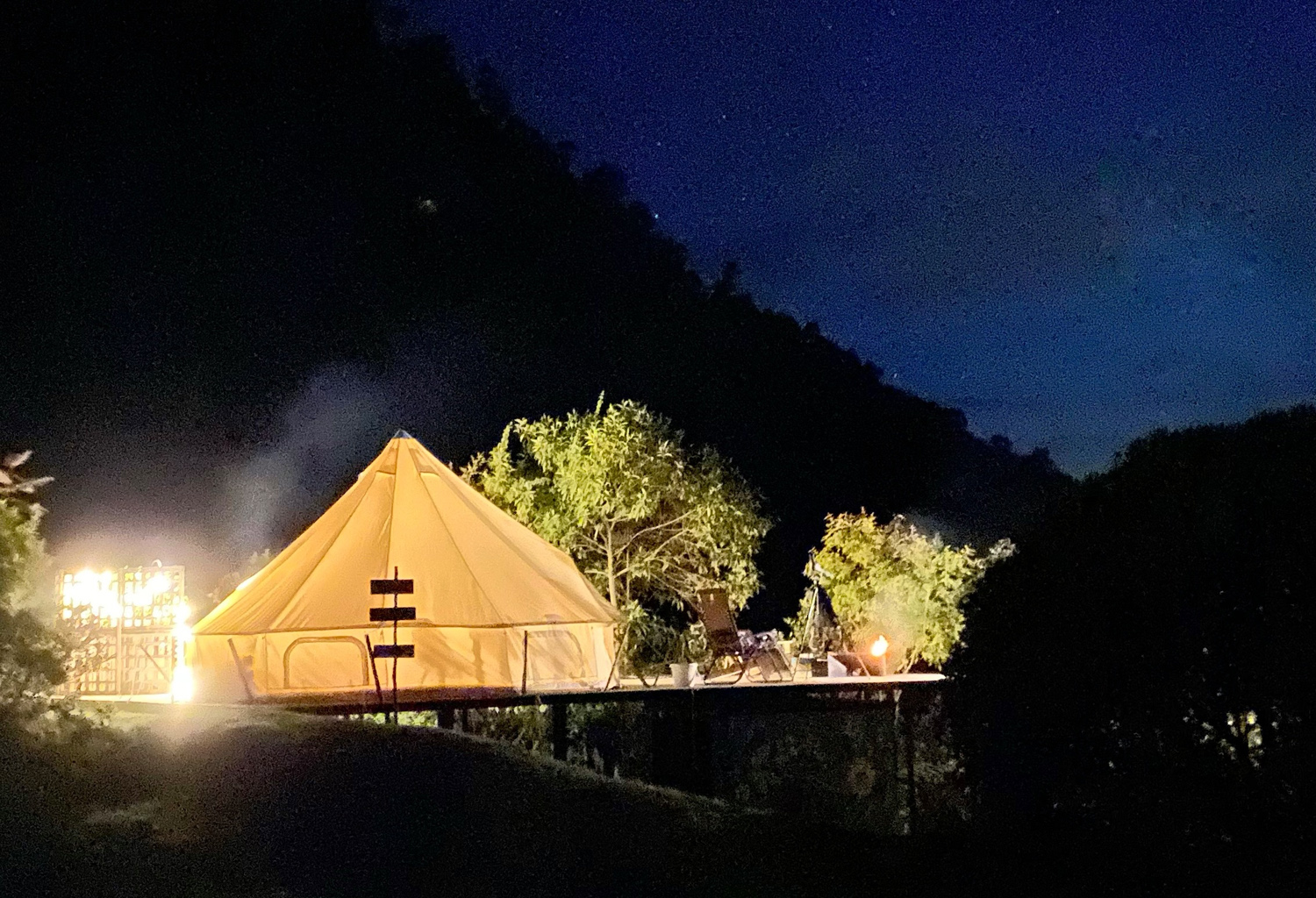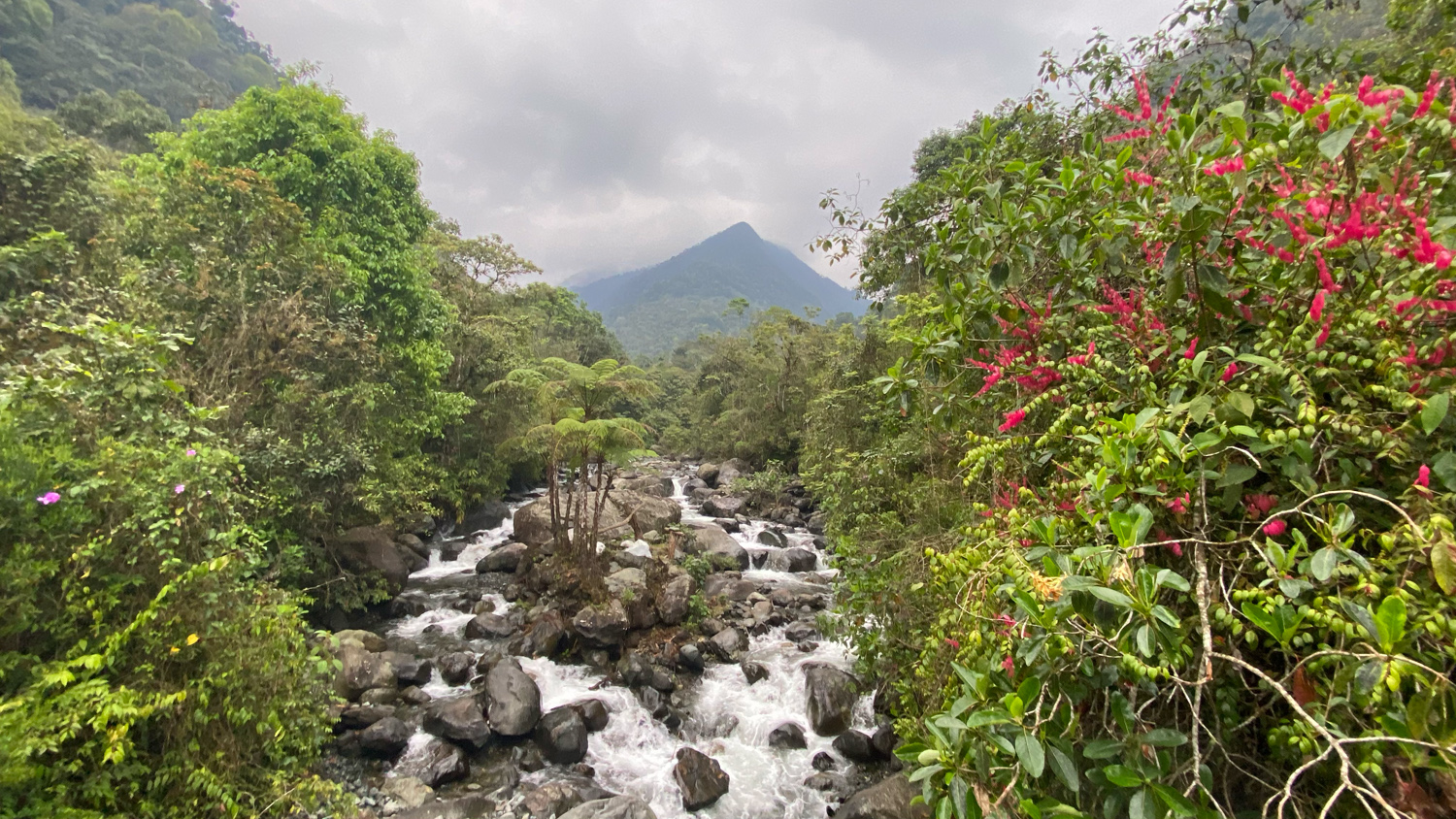Colombia
January 10-23, 2027
+ extra week in Sierra de Santa Marta & Guajira Peninsula, January 23-30
Colombia
January 10-23, 2027
+ extra week in Sierra de Santa Marta & Guajira Peninsula, January 23-30
Chocó Region, Western and Central Andes, January 10-23, 2027
+ extra week in Sierra de Santa Marta & Guajira Peninsula, January 23-30
Price: 69.900 NEW PRICE! 64 900 SEK (excluding airfare)
Single Room Supplement: 6,000 SEK
Price for the extra week: 34.900 NEW PRICE! 32 900 SEK
Multi-colored Tanager / Santa Marta Screech Owl / Santa Marta Antpitta / White-tipped Quetzal / Toucan Barbet / Guyanan Cock-of-the-rock / Buffy Helmetcrest / Crescent-faced Antpitta / Equatorial Antpitta
The world’s highest bird-diversity
Colombia is renowned for its incredibly rich fauna and flora, often called the most biodiverse country in the world, and it has a lot to offer birdwatchers. With coastlines on both the Pacific Ocean and the Atlantic (Caribbean Sea) and crossed by the Andes mountain range, the country provides a diversity of environments at various altitudes. A total of 1,900 bird species, including 80 endemics and several near-endemics, have been recorded here. We start with the Western and Central Andes, the Chocó region, and the Cauca Valley. To conclude, we will have an extra week in the Santa Marta mountains and the beautiful Caribbean coast and Guajira Peninsula.
Here, you will find plenty of both colorful and unique birds. Some of the top attractions include the Multi-colored Tanager, Golden Tanager, Gold-ringed Tanager, Santa Marta Screech Owl, Santa Marta Antpitta, and White-tipped Quetzal – just a few examples of the many birds we will see on this trip. There is a wide variety of endemic birds and also emblematic South American species such as the Crescent-faced Antpitta, Toucan Barbet, and Guianan Cock-of-the-rock, among others. Among the many hummingbird species, the Buffy Helmetcrest is one of the top attractions, being the most famous of the approximately 50 hummingbirds we have a chance to see during the trip.
Colombia doesn’t offer as many mammals as Costa Rica, but there is a chance to see monkeys, coatis, agoutis, and procyonids like the kinkajou, among others. Felines such as the margay or ocelot are elusive, but sightings do occur. Colombia also boasts a rich diversity of butterflies, with over 3,600 species, 200 of which are unique to the country.
The trip is a birdwatching tour focused on seeing many of the unique species in the area. There are also plenty of excellent photography opportunities, especially since several lodges have bird feeders for both tanagers and hummingbirds. We will also visit feeding stations for antpittas, including the Equatorial Antpitta and Crescent-faced Antpitta. We will be active during most of the daylight hours and occasionally take night tours with spotlights.
We will explore a variety of environments, from humid rainforests and cloud forests at higher elevations to mangrove swamps and coastal wetlands. On the Guajira Peninsula, we will encounter dry, sandy environments in a hot climate.
Excursions take up the majority of the time, and on this trip, there isn’t much room for flexibility. When we stay several nights in a row at the same lodge (such as La Araucana, Termales del Ruiz, for example), there may be occasions where you can choose between staying at the lodge or joining the excursion.
We land in Cali, Colombia’s third-largest city, where flights are available from several European cities. We begin our exploration of the western slopes of the Andes and the Choco´ region. Here, we’ll venture into an area with the help of a type of railcar known as ”Brujitas,” which runs on tracks into a completely roadless area. We continue through the central Andes and also visit wetlands along the Pacific coast. For most of the journey, we’ll travel by comfortable bus and switch to 4-wheel-drive jeeps for a couple of shorter excursions at higher altitudes. After the first two weeks, those who booked the extra week will fly domestically to Barranquilla/Santa Marta. The trip proceeds at a fairly brisk pace with many early mornings but doesn’t involve overly strenuous walks, mostly on roads and trails.
We have a Colombian guide and organizer throughout the trip, from the moment we land at the airport until it’s time to go home. In several locations, we also have a local extra guide who specializes in the bird species of that particular area.
Visiting Colombia at the beginning of the year has several advantages. It’s the driest time of the year (although it can still rain occasionally), and the intense heat hasn’t fully arrived yet. It’s also the start of the breeding season for many native birds such as woodpeckers, owls, quetzals, and hummingbirds. This makes them more stationary and easier to find. Additionally, a large number of North American migratory birds are present, contributing to the overall diversity.
Colombia is a country with variable climates and significant differences in elevation. At 3,000 meters above sea level, temperatures can drop to a few degrees above freezing during the night and early morning. At lower elevations and near the coast, it is warm and sometimes even dry, while in between, it’s similar to a Swedish summer, mostly pleasant. Sandals and shorts are as useful as Swedish winter clothing (which you’ll likely be traveling in from Sweden). Packing tips will always be sent to participants before the trip.
Most nights, we stay at lodges located close to nature, specifically designed for birdwatching tourism, perfectly suited to our needs. Occasionally, we spend single nights at various hotels along the way to our destinations. All accommodations are of good standard, with rooms equipped with air conditioning, showers, and comfortable beds. One night, we’ll stay at a ”glamping lodge” up in the mountains, where we’ll reside in large tents. Here, we’ll share bathrooms and tolerate slightly cooler temperatures. However, two other nights, we’ll indulge in spa treatments and hot baths at a truly luxurious hotel.
Colombian cuisine is diverse, often consisting of several dishes with beans, rice, and vegetables as the base, with occasional options for grilled meat. While chili is common, the food is generally not very spicy. We’ll also have the opportunity to taste some local specialties. Arepas, a type of corn cake, are often served for breakfast, and we’ll likely encounter Empanadas—filled pastries—during our journey. Beer and wine are typically available at both restaurants and lodges. Wi-Fi is available at most lodges, albeit to varying degrees, sometimes only in the lobby.
When: Chocó region, western and central Andes from January 10th to January 23rd, 2027
+ Extra week in Sierra de Santa Marta & Guajira Peninsula from January 23rd to January 30th, 2027
Price: 69.900 NEW PRICE! 64 900 SEK (excluding airfare)
Single Room Supplement: 6,000 SEK
Price for the extra week: 34.900 NEW PRICE! 32 900 SEK
Note: We reserve the right to adjust the price if local costs or currency changes justify it. Also, minor adjustments to the start and end times of the trip may sometimes be necessary.
We offer to book the flight for you. It’s important for us to be on the same flight.
Pace/Exertion:
Our local operator describes the trip as comfortable and accessible without demanding or strenuous hikes. Most walks are on flat terrain, and we mostly birdwatch downhill. There are no physical requirements for participants. However, the pace is to be considered as high, typically with early rises and activities throughout the daylight hours. In the tropics, it gets dark around 6 p.m.
Other: This is a mixed tour open to English-speaking and Swedish travelers.
What’s included: Full board in double rooms at hotels, Swedish (English speaking) tour leader, local guide throughout, all transportation, and any entrance fees to nature reserves and parks.
Not included: Airfare, transfer to the airport, insurance (Note: European Health Insurance Card is not valid here. Participants are required to have travel insurance covering accidents and illnesses.), alcohol, souvenirs, and other personal expenses, tips to local guides/drivers.
Vaccination: Hepatitis A&B (Twinrix), tetanus, yellow fever. Bring malaria tablets.
Number of participants: Min 6 – Max 10 people
Registration fee
When you have registered, we will send you an invoice for the registration fee, which is 20% of the total price of the trip. Once it is paid, you are guaranteed a place on the trip.
Day 1 (January 10)Arrive in Cali.
This multicultural city is the third largest city in Colombia with direct flights from multiple countries in Europe and cities around the US. We will get together as a group for a welcome dinner around 7pm. Spend the night in Cali.
Day 2 (January 11) Birding Alto Anchicaya.
During our first full day we will head up to Parque Nacional Farallones de Cali,particularly to the Alto Anchicaya located in the western slope of the Western Andes. This slope of the Andes is part of the Choco region, one of the most biodiverse places on Earth. We will start birding along the road on our way to El Descanso, House of the Doña Dora, which is considered the best backyard birding in the world. We will see birds like the near endemic Toucan Barbet, White-whiskered Hermit, Empress Brilliant, Green Thorntail, Rufous-gaped Hillstar, Uniform Treehunter, Red-faced Spinetail, White-lined Tanager, Golden Tanager, Silver-throated Tanager, Rufous-throated Tanager, Glistening-green Tanager and many more while we enjoy delicious home made cheese empanadas. We will spend most of the day birding this area and looking for fascinating orchids and butterflies before we go to our new place for the next two nights. Overnight at La Araucana.
Day 3 (January 12) Birding San Ciprino.
Today we will adventure to a location called San Cipriano, located in the lowlands of the Choco region. San Cipriano is a unique place, with no road systems. The only way to get there is with a traditional transportation called “Brujitas.” We will spend all day in this amazing place looking for many regional specialties like: Rose-faced parrot, Saffron-headed Parrot, Blue-headed Parrot, White-whiskered Hermit, Rufous-breasted Hermit, Tooth-billed Hummingbird, Blue-chested and Purple-chested hummingbird, Purple-crowned Fairy, Black-breasted Puffbird, White-fronted Nunbird, Lanceolated Monklet, Chocó Trogon, Chocó Toucan, Yellow-throated Toucan, Spot-crowned Barbet, Five- colored Barbet, Chestnut-backed Antbird and Zeledon’s Antbird, Stub-tailed Antbird, Golden- collared Manakin, Pacific Flatbill, Cinnamon Becard, White-thighed Swallow, Bay Wren, Orange-billed Sparrow, and Tawny-crested, Scarlet-browed and Scarlet-and-white Tanager, as well as the most enigmatic bird in the region, the Sapayoa. We can’t get lost in only birds, though, as this area is one of the best to look for butterflies and amphibians. We will return to our lodge for dinner and spend our last evening at La Araucana.
Day 4 (January 13) Birding in San Antonio Cloud Forest.
With our traditional early start, we will head to San Antonio Cloud Forest- a really important area for migratory birds. We will be visiting some of the most famous feeding stations in the region to enjoy stunning birds like these endemics: Multicolored Tanager, Chestnut Wood-Quail and White-throated Quail-Dove. We will also look for Colombian Chachalaca, Scarlet-fronted Parakeet, Red-headed Barbet, Crimson-rumped Toucanet, Uniform Antshrike, Montane Woodcreeper, Red-faced Spinetail, Spotted Barbtail, Rusty-winged Barbtail (easily overlooked), Streak-capped Treehunter, Streaked Xenops, Nariño Tapaculo, Green-and-black Fruiteater, Marble-faced and Variegated bristle-tyrant, Cinnamon Flycatcher, Golden-crowned Flycatcher, Andean Solitaire, Three- striped Warbler, Rusty Flowerpiercer, Orange-bellied Euphonia, Saffron-crowned, Golden-naped, Metallic-green (near endemic), Golden, Bay-headed, Black-capped, and Beryl-spangled. Also regular at feeders are the incredible Multicolored Tanager (endemic), as well as Blue-winged Mountain-Tanager and Andean Motmot. After all day around this area, known as Kilometer 18 we will go to our hotel for dinner. Night at Hotel La Huerta.
Day 5 (January 14) Laguna de Sonso.
Just like some birds, we will have an early start to go to Sonso Lagoon. This complex of wetlands around the Cauca River, the second largest river in Colombia, is another great area for migratory birds. Here we will encounter the unique Horned Screamer, Black-bellied and Fulvous Whistling Ducks, Snail Kite, Limpkin, Great Egrets, Bare-faced, Glossy and Buff-necked Ibises, Apical Flycatcher, Spot-breasted Woodpecker, Little Cuckoo, Dwarf Cuckoo, Spectacled Parrotlets, Bar-crested Antshrike. In the evening we will head north to a wine region where we will have dinner and spend the night at Tatama.
Day 6 & 7 (January 16-16) Birding High & Middle Tatama.
Tatama is a nature lovers paradise. This mountain range is where two main regions meet: the Western Andes and the Choco region, creating a great habitat where more than 600 species of birds have been seen. Some of these include endemics such as: Gold-ringed Tanager, Black-and-gold Tanager, Chestnut-bellied Flowerpiercer, Munchique Wood-Wren, and many regional specialties like: Sickle- winged Guan, Cloud-forest Pygmy-Owl, Western Emerald, Crowned Woodnymph, Brown Inca, Greenish Puffleg, Violet-tailed Sylph, Crested and Golden-headed Quetzal, Black-billed Mountain-Toucan, Fulvous-dotted Treerunner, Lineated Foliage- gleaner, Scaly-throated Foliage-gleaner, Uniform Treehunter, Plain Antvireo, Bicolored Antvireo, Paramillo Tapaculo, Rufous-headed Pygmy-Tyrant, Bronze-olive Pygmy-Tyrant, Green-and-black Fruiteater, Orange-breasted Fruiteater, Golden-breasted Fruiteater, Scaled Fruiteater, Olivaceous Piha, Beautiful Jay, Black Solitaire, Glistening-green Tanager, Multicolored Tanager, and Indigo Flowerpiercer. With two full days here we will have many chances to see these specialties of the region. Night at Montezuma lodge.
Day 8 (January 17th) Lower Tatama transfer to Manizales.
Today we will start descending birding the momtezuma road, looking for some birds on our way to Manizales where we will spend the next night. Manizales is a one of the bigger cities in the coffee region, located in the central Andes this city provide and extraordinary views of the coffee plantation also consider on of the most beautiful landscape in the world. Night in Manizales.
Day 9 (January 18th) Hacienda El bosque.
On our ninth day we will head to Hacienda El Bosque which is a fantastic place for birding and photography. At an altitude of 2,800 to 3,900m there are many different habitats that will allow us to see some of the high Andes specialties like: Collared Inca, White-bellied Woodstar, Mountain Velvetbreast, Sparkling Violetear, Lesser Violetear, Tourmaline Sunangel, Tyrian Metaltail, Buff-Winged Starfrontlet and also the sought-after and gaudy Gray-breasted Mountain-Toucan. Also, you will be amazed at the Anpitta feeders where we will able to see Equatorial Antpitta and one of the most beautiful of all, the Crescent-faced Antpitta. After enjoying this incredible spot we will spend the night in Manizales.
Day 10 (January 19th) Birding Rio Blanco.
We will have an early departure and go to Rio Blanco, another famous place for Anpitta feeders and a great birding location. The site is home of 13 endemic birds like the Brown-banded Antpitta and the near endemic Bicolored Antpitta. Here we are on an Antpitta roll looking for Chestnut-crowned Antpitta and Slate-crowned Antpitta. The rest of the day we will see a variety of feeders that can provide birds like: Long-tailed Sylph, Speckled Hummingbird, Bronzy Inca, Buff-tailed Coronet, Fawn- breasted Brilliant, White-throated Daggerbill, Pearled Treerunner, Black-capped and Black-eared Hemispingus, Streak-headed Antbird, Lacrimose Mountain Tanager. The stunning Blue-winged Mountain Tanager and other jaw-droppers like Andean Motmot, Grass-green Tanager, Golden-plumed Parakeet, Green-and-black Fruiteater, Gray-browed Brushfinch, Masked Saltator, Plushcap, Yellow-billed Cacique, and an Ash-colored Tapaculo can be seen. After a successful day we will head higher in elevation to our hotel-spa for the nest two nights. Night at Termales del Ruiz.
Day 11 (January 20th) Birding in Los nevados National Park.
While breakfast is being prepared we will bird around the hotel that has numerous good trails and feeders. Our hotel is located at 3500m over the sea level giving us the opportunity to see birds like: Shining Sunbeam, Rainbow-bearded Thornbill, Golden-breasted Puffleg and Black-thighed Puffleg. After a delicious breakfast we will take a short drive to Los Nevados National Park in search of a gem of Colombia- the Buffy Helmetcrest. This is the best spot to look for this endemic. Leaving here we will have lunch and continue on to enjoy birding the Elfin Forest. This forest is part of the National park and home to some of the high elevation endemics such as the Rufous-fronted Parakeet. Many more birds including Tawny Antpitta, Stout-billed Cinclodes, Crowned Chat-tyrant, Brown-backed Chat-tyrant, White-chinned Thistletail, Hooded Mountain Tanager, Golden-crowned Tanager, Black-backed Bush Tanager, and Páramo Tapaculo are in this area. After this good day we will head back to our hotel-spa for dinner. Night at Termales del Ruiz.
Day 12 (January 21st) Birding in El Color de Mi Revez.
Starting early we will travel to an elegant lodge in the high cloud forest. Our travel will require a 4×4 to drive on a secluded mountain road. Paying no mind to the rough terrain, we will cross streams and put our attention in looking for the the Rufous-fronted Parakeet. Here we will overlook more of the fantastic Andean landscape. Because of this the photo opportunities are exceptional with birds like: Mountain Velvetbreast, Buff-tailed Coronet, Tourmaline Sunangel, Collared Inca, White-bellied Woodstar, Sword-billed Hummingbird, Black-billed Mountain-Toucan, Bicolored Antpitta, Azara’s Spinetail, Hooded Mountain Tanager, Lacrimose Mountain Tanager, Masked Flowerpiercer, Glossy Flowerpiercer. There is also a good chance to see the elusive Ocellated Tapaculo during the day or the crab-eating fox at night. Overnight at Glamping El Color de Mis Reves.
Day 13 (January 22nd) Birding in Tinamu lodge.
We will soak up the early birding around El Color de Mis Revez checking multiple feeding stations on the property before we descend the Central Andes for a warmer night at the comfortable Tinamu Lodge. This small reserve is surrounded by feeders with a great network of trails. Located in the foothills off the Andes close to Manizales, it is a different habitat with new birds to our tour. These can include Mustached Puffbird, Blue- lored Antbird, Speckle-breasted Wren, Guira Tanager and Golden-collared Manakin. Here we will have even more photo opportunities for Lesser and Sparkling Violetears, Scrub Tanager, Steely-vented Hummingbird, Green Honeycreeper, Blue- necked Tanager, Long-billed Starthroat, Andean Emerald and Green Hermit. Night at the lodge of Tinamú Birding Reserve.
Day 14 (January 23nd) Birding and Departure.
Our last day so we will soak up the morning around the lodge before we depart to the Airport in Pereira.
We start with the Western and Central Andes, the Chocó region, and the Cauca Valley. To conclude, we will have an extra week in the Santa Marta mountains and the beautiful Caribbean coast and Guajira Peninsula.
We start with the Western and Central Andes, the Chocó region, and the Cauca Valley. To conclude, we will have an extra week in the Santa Marta mountains and the beautiful Caribbean coast and Guajira Peninsula.
You’re invited to book a wildlife trip with us!
Whether you choose to travel with us to a distant land or to photograph eagles from a photo hide, you can rest assured that we:
We possess local knowledge
Sustainable nature tourism is our focus
We have many years of experience

